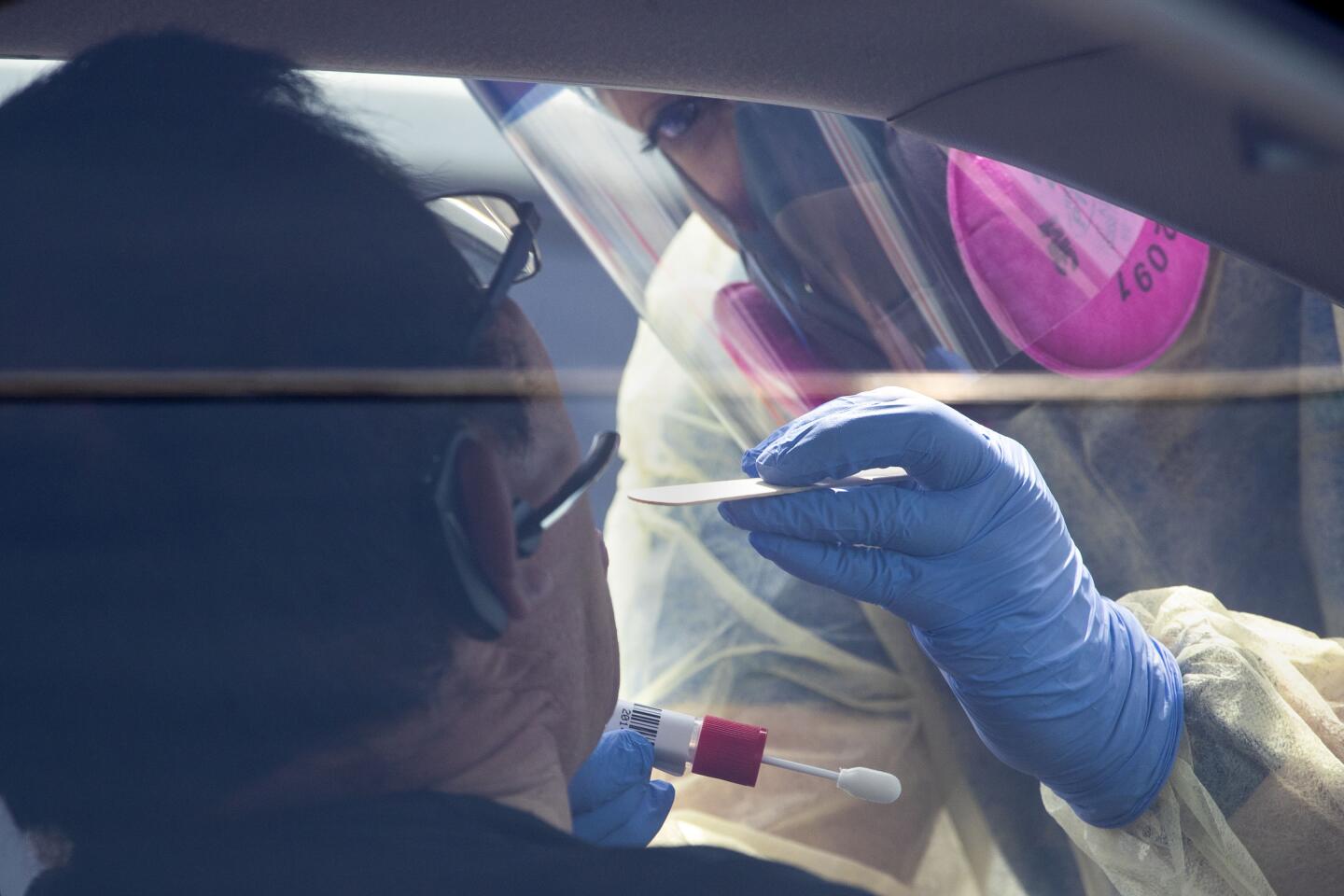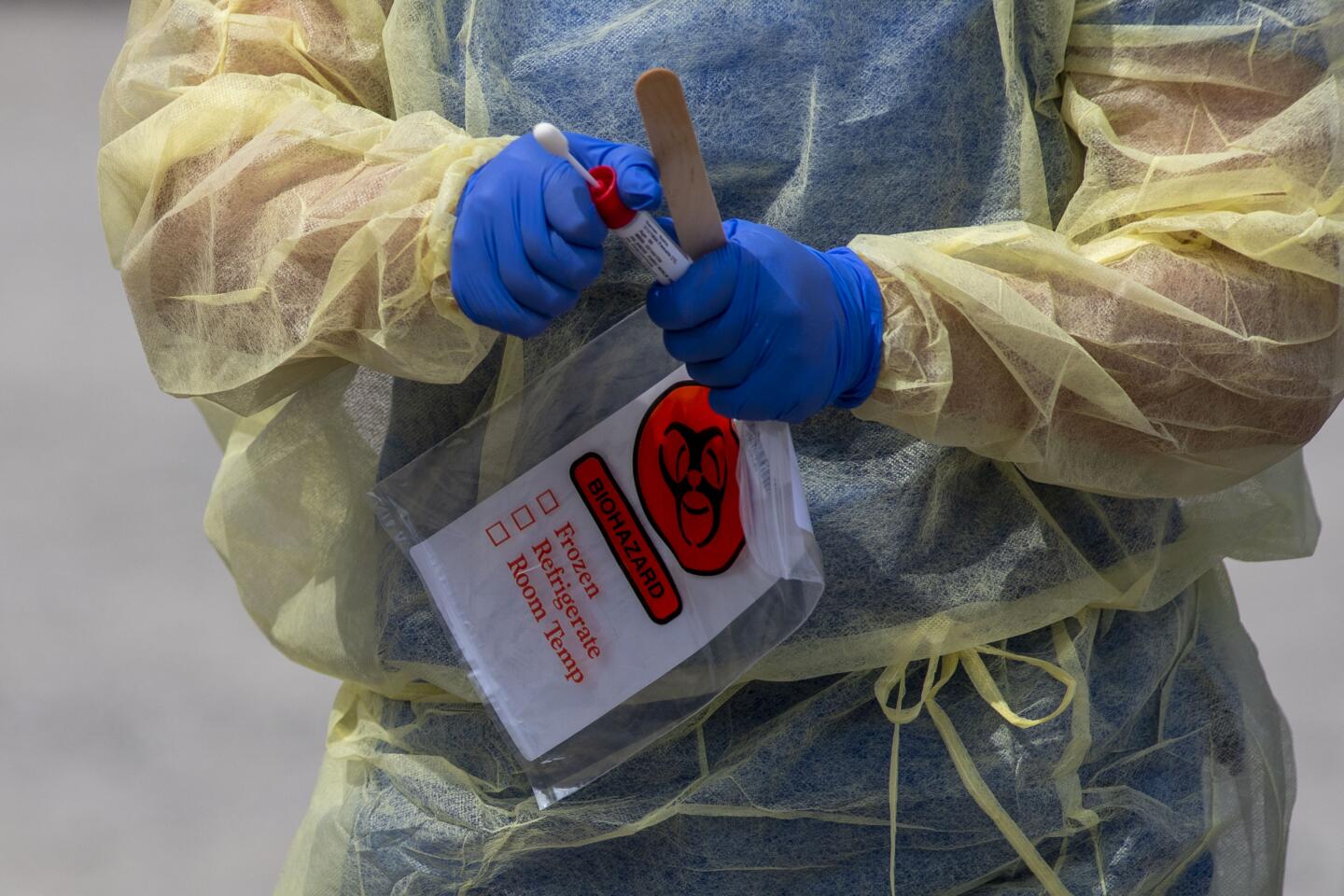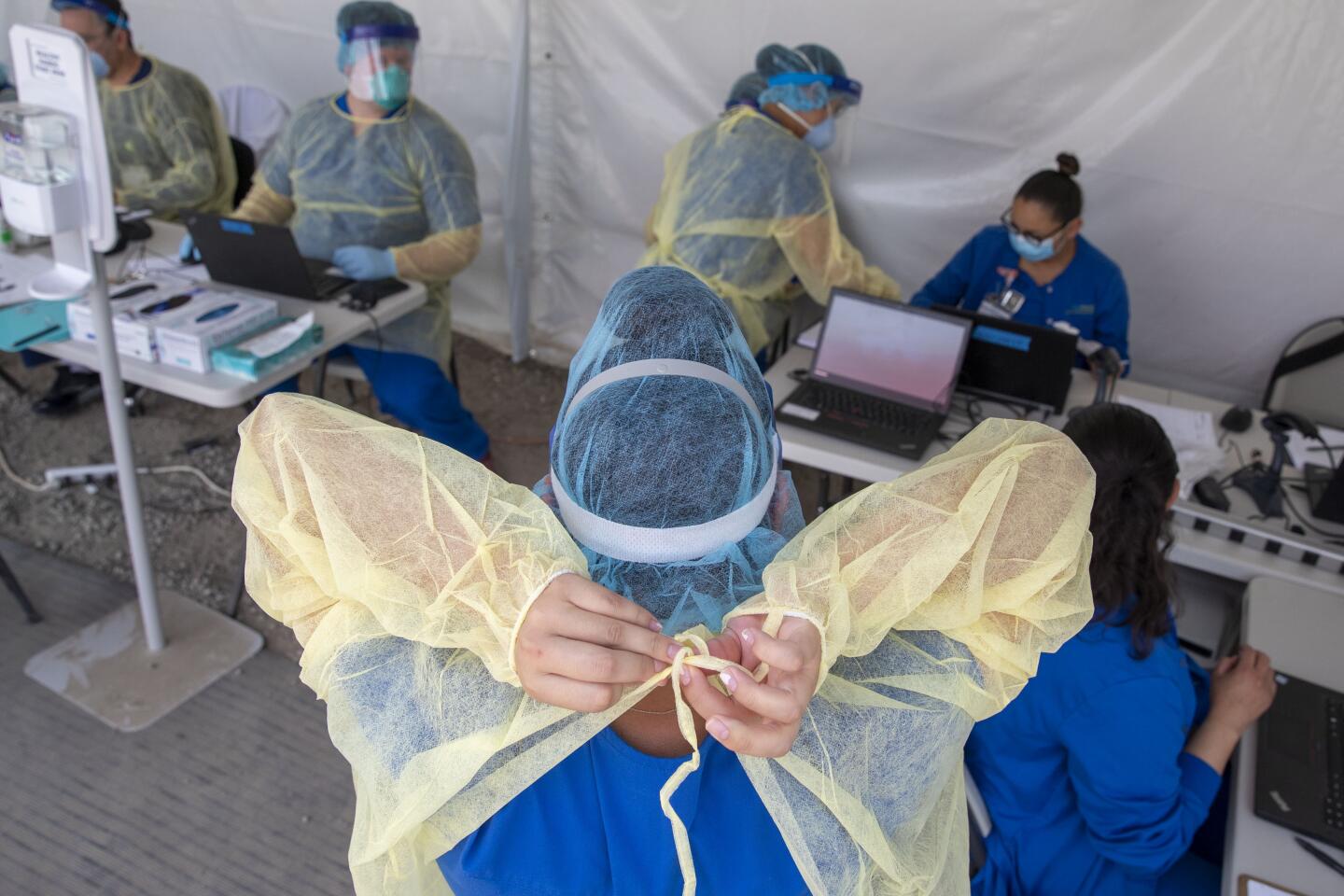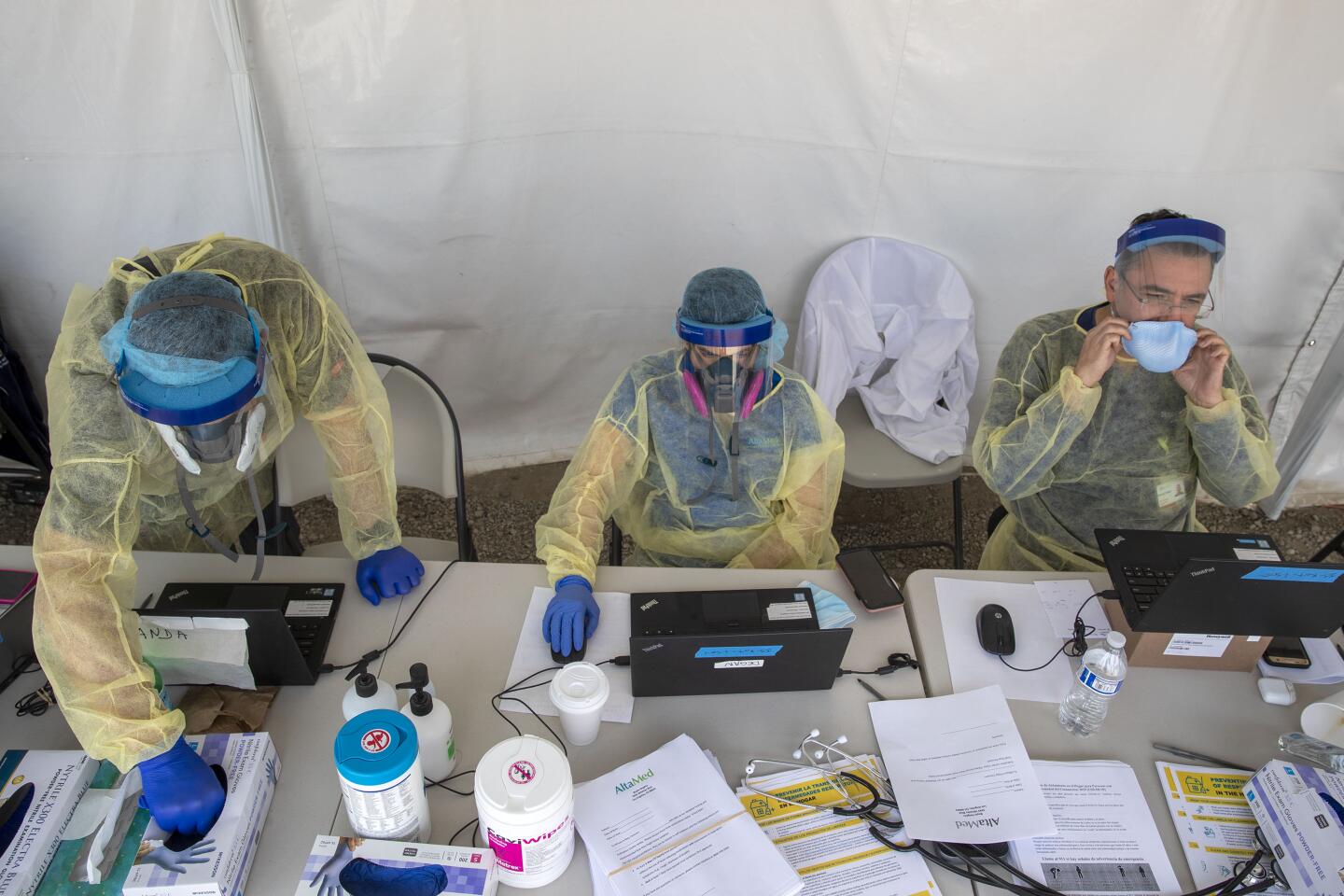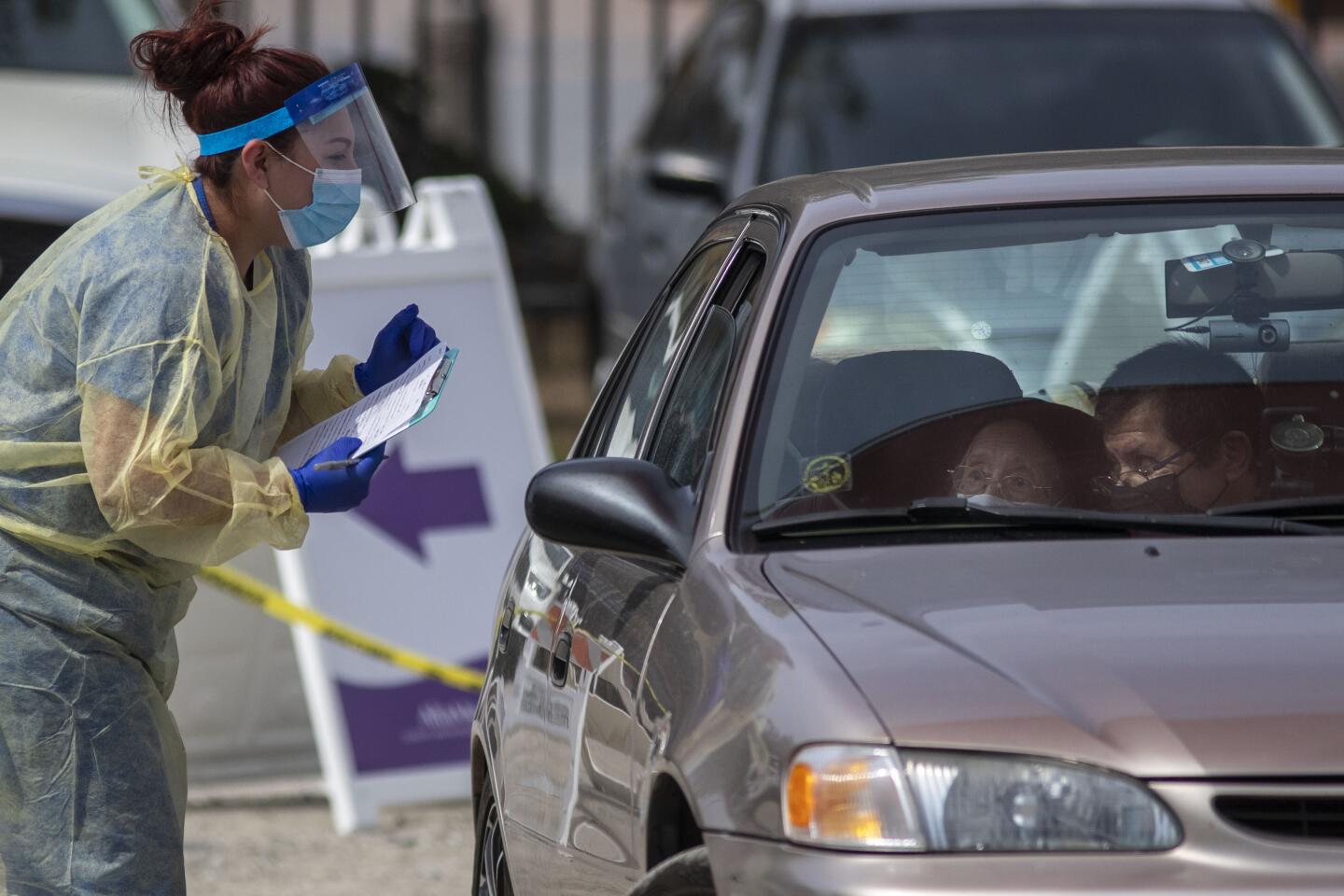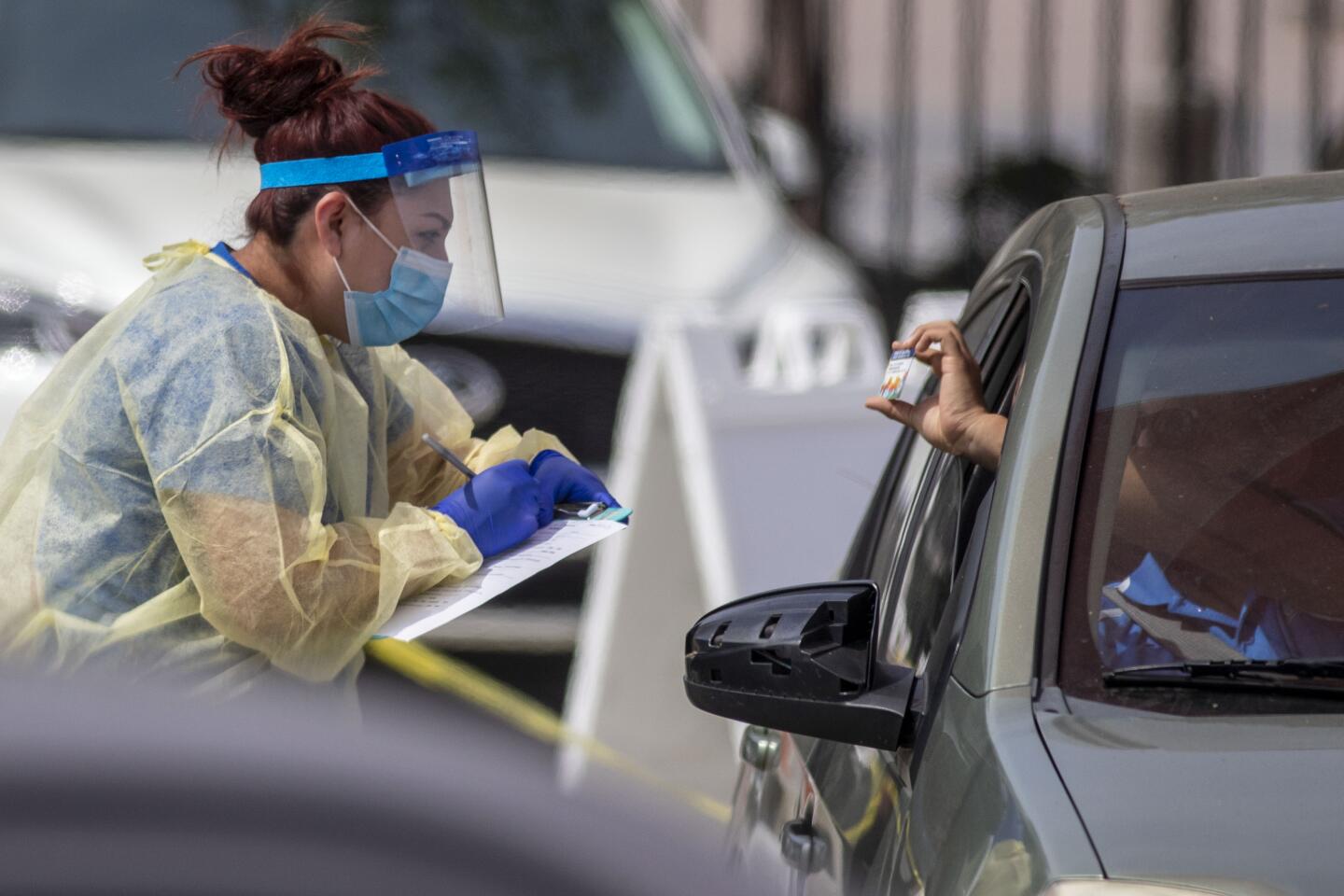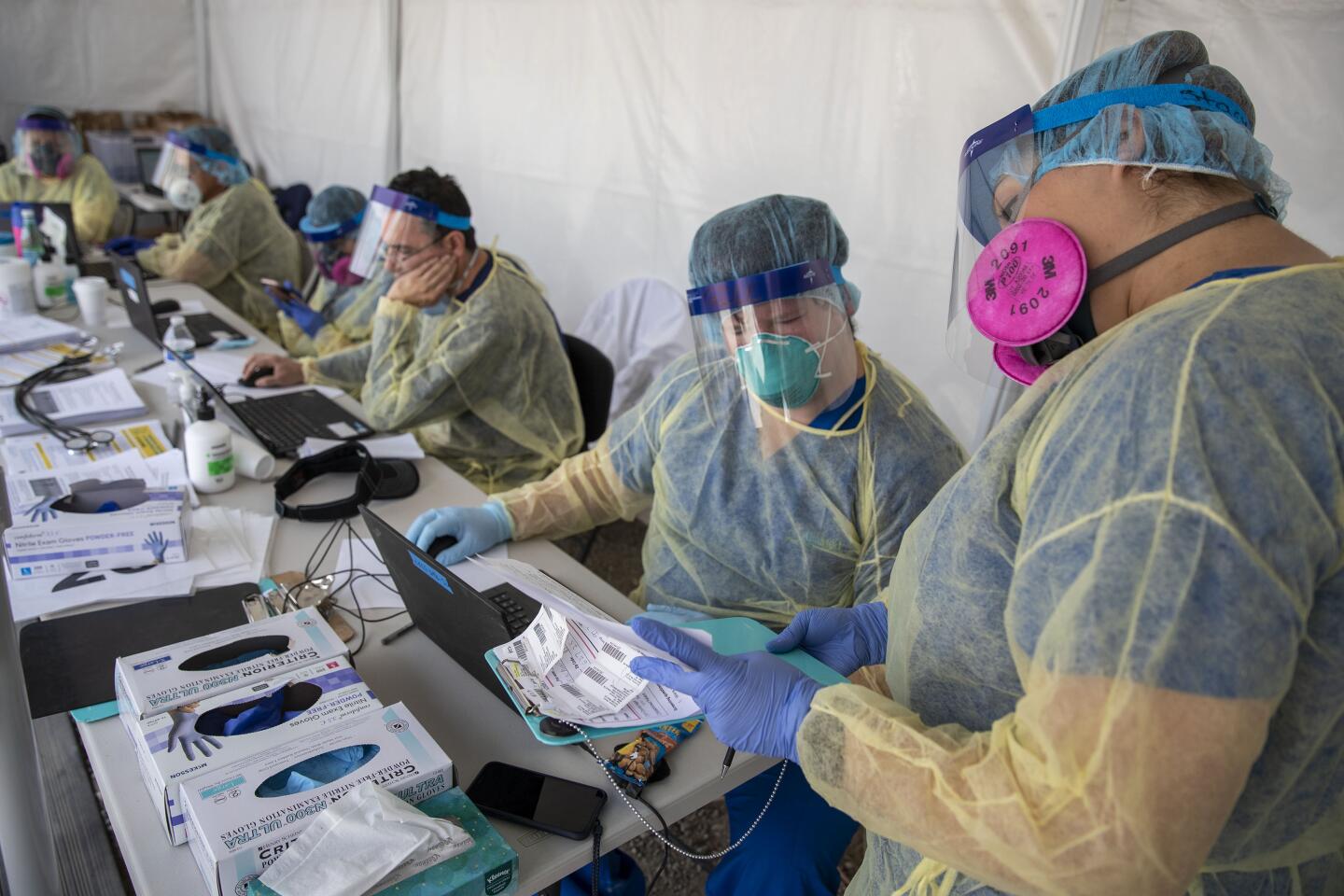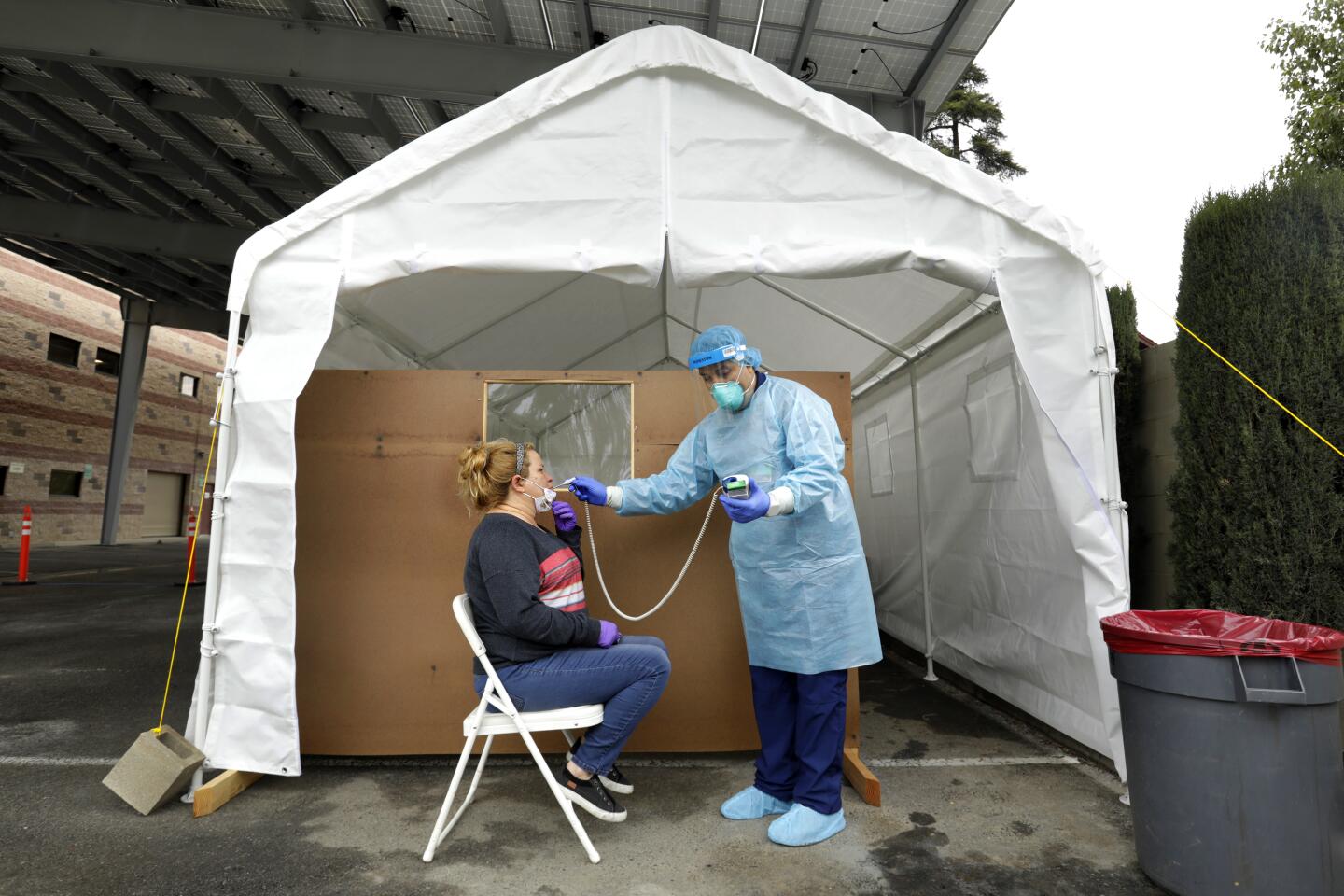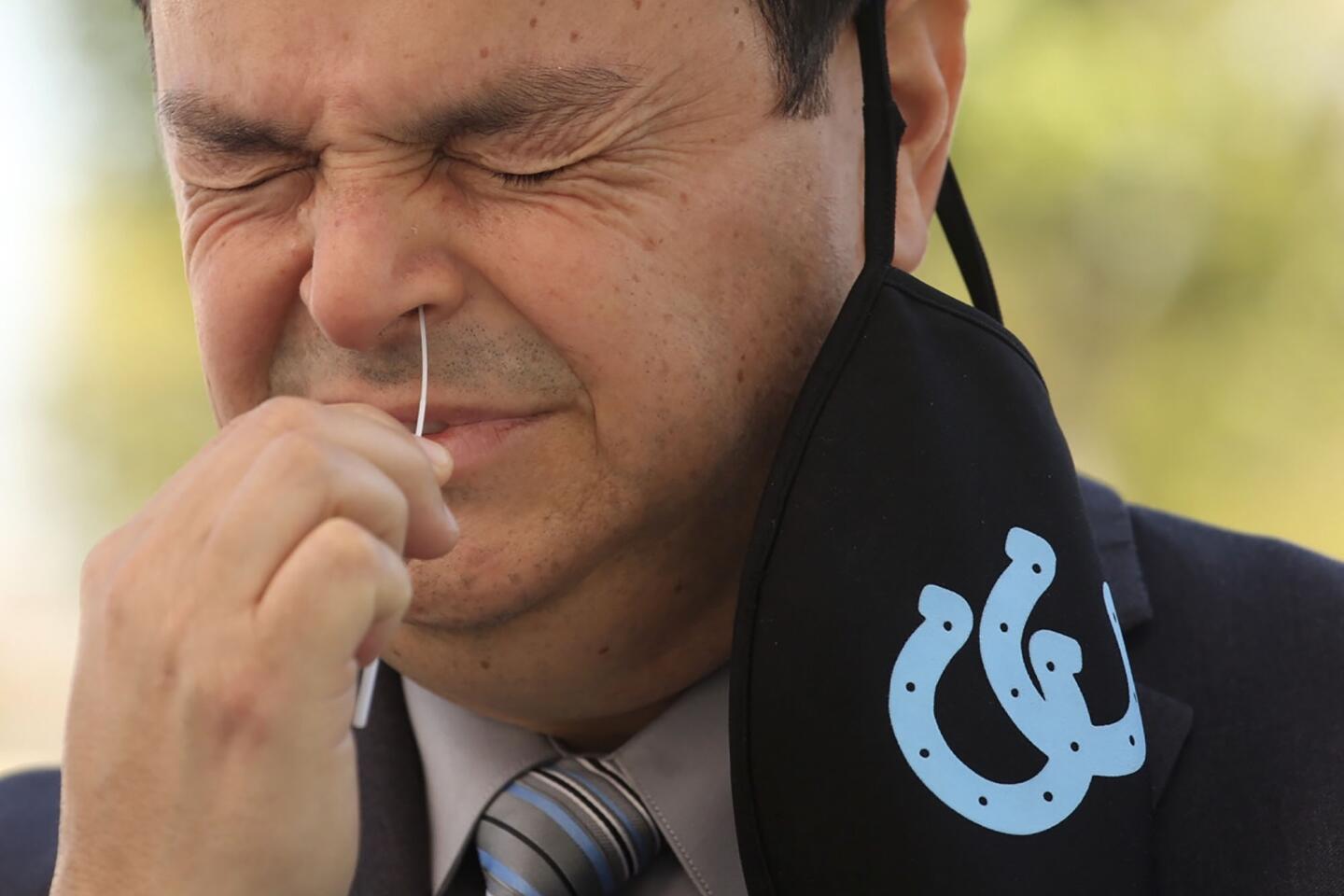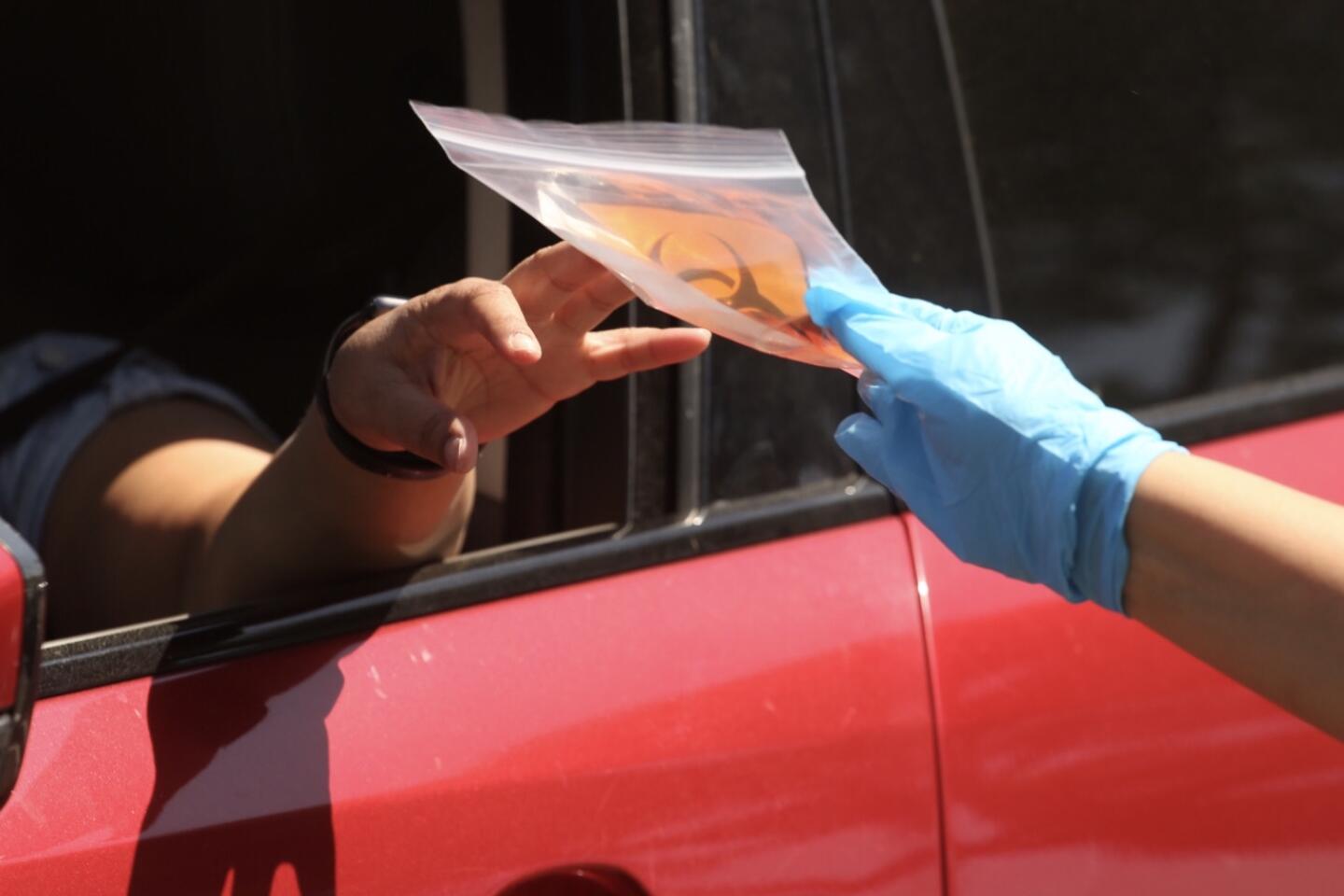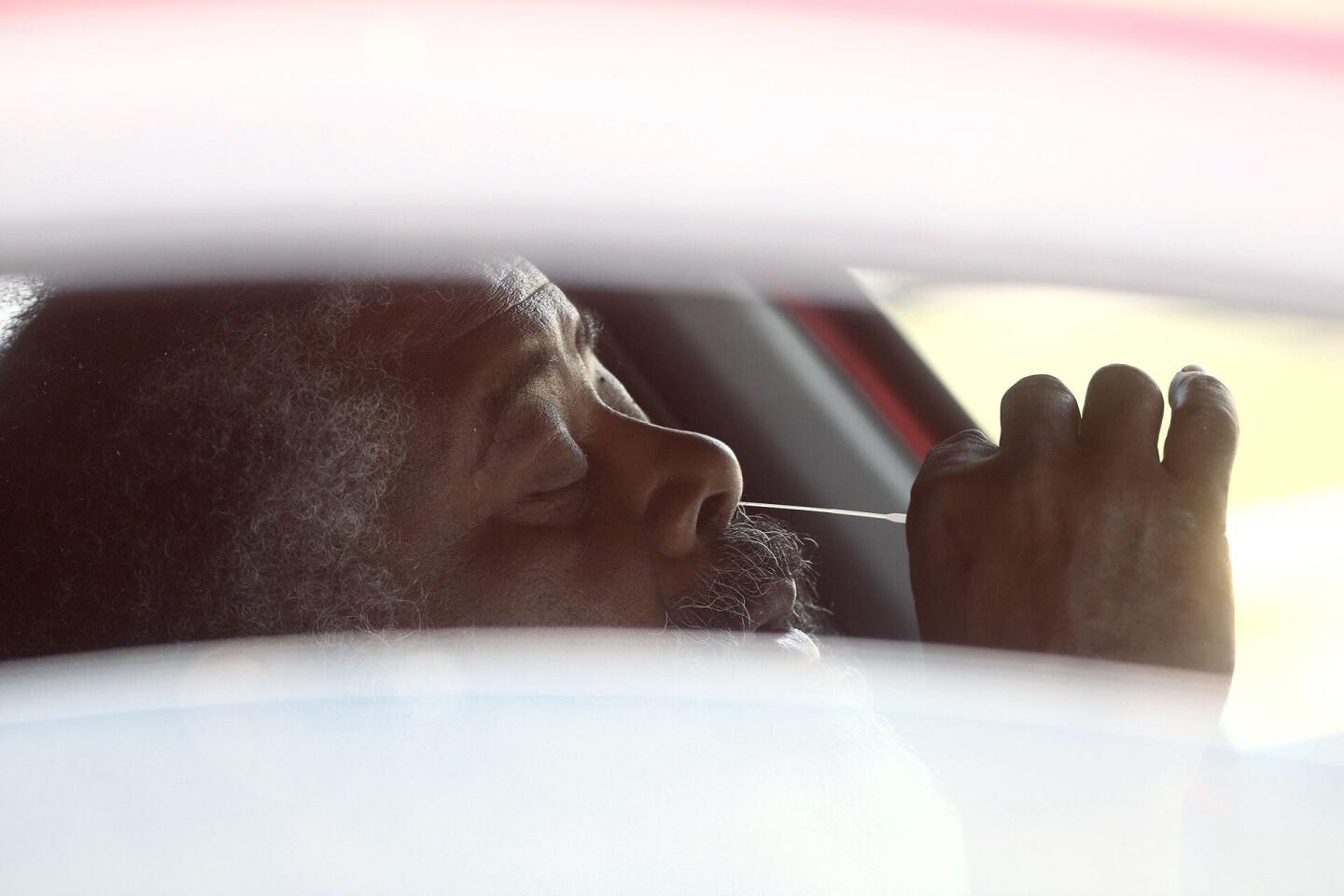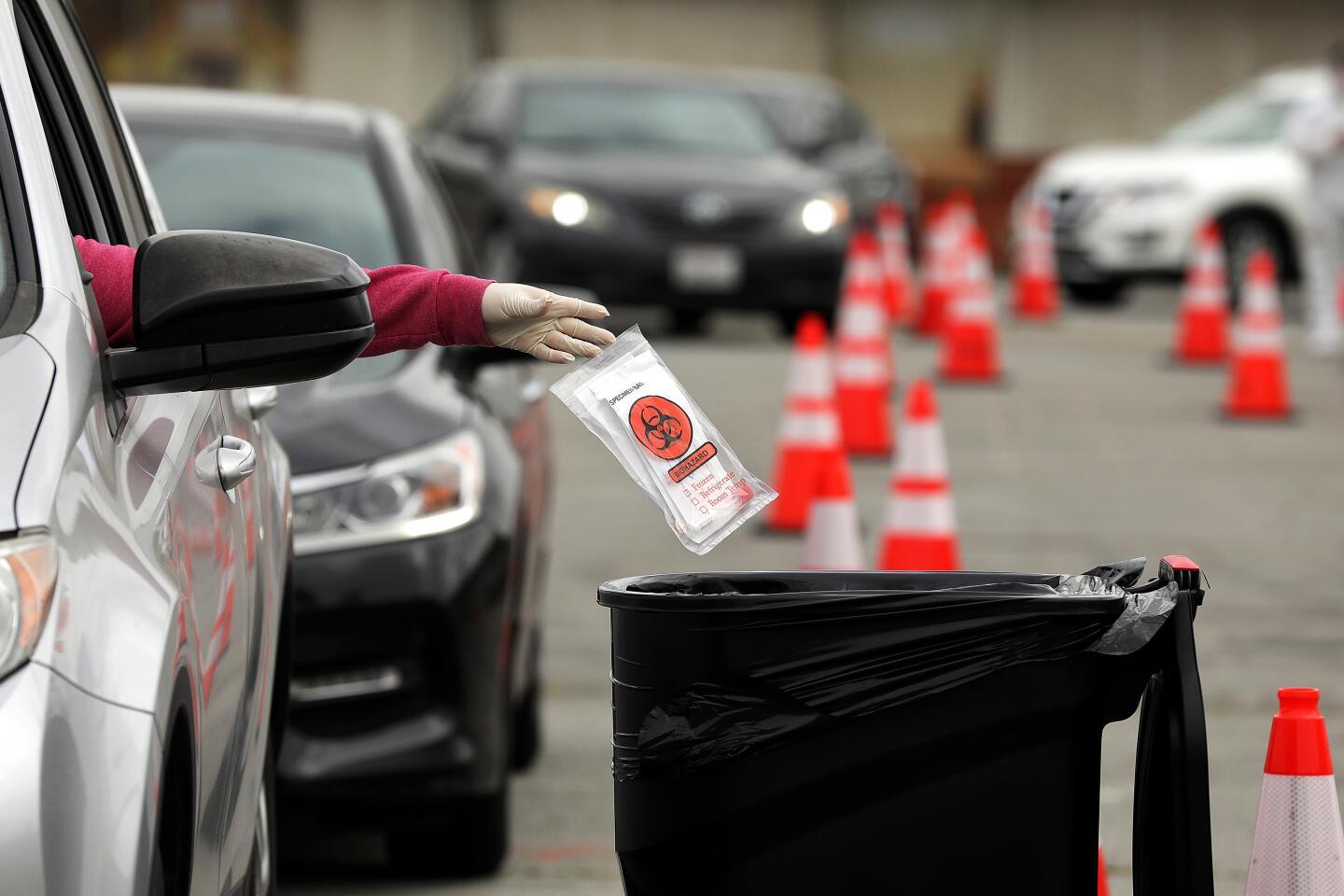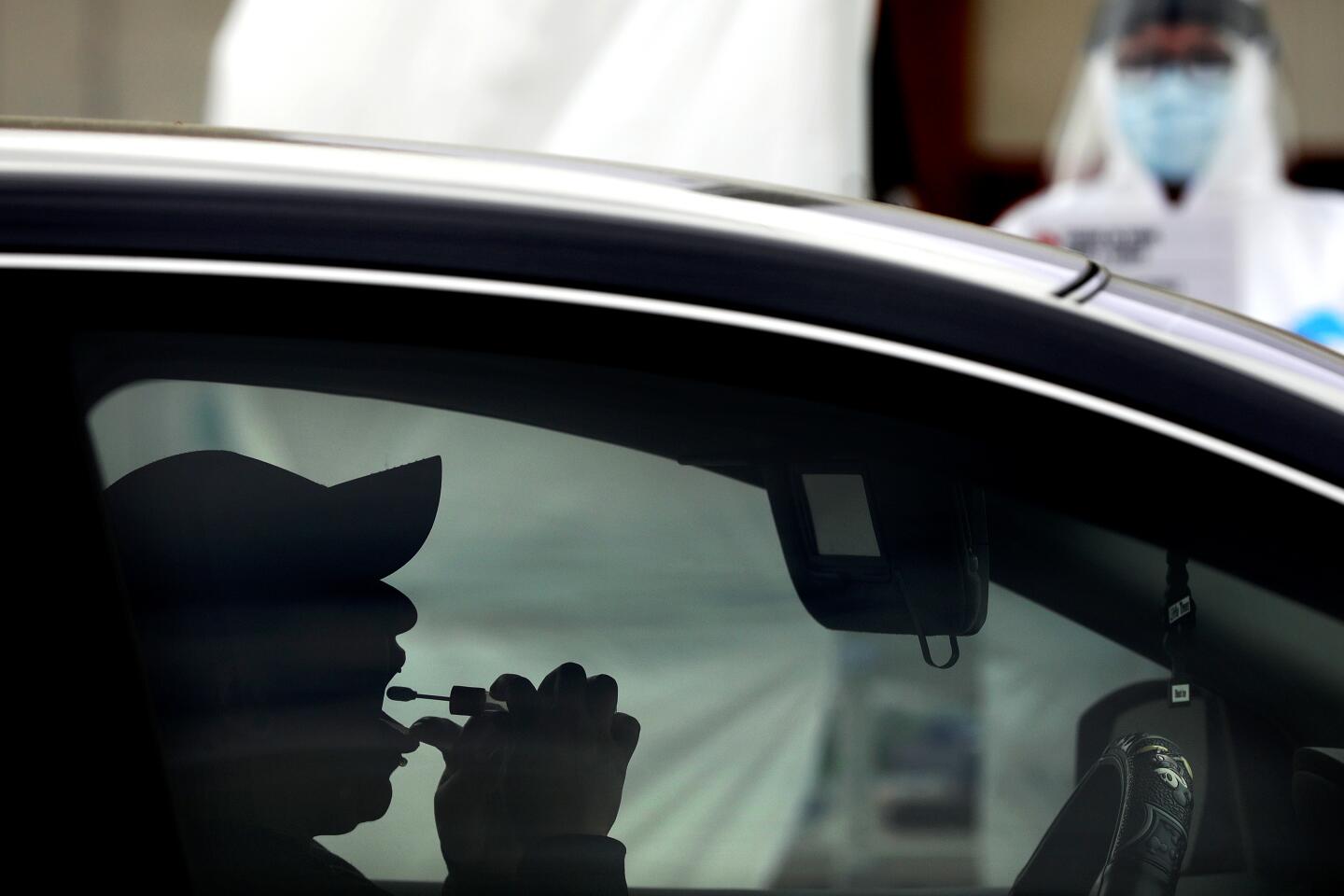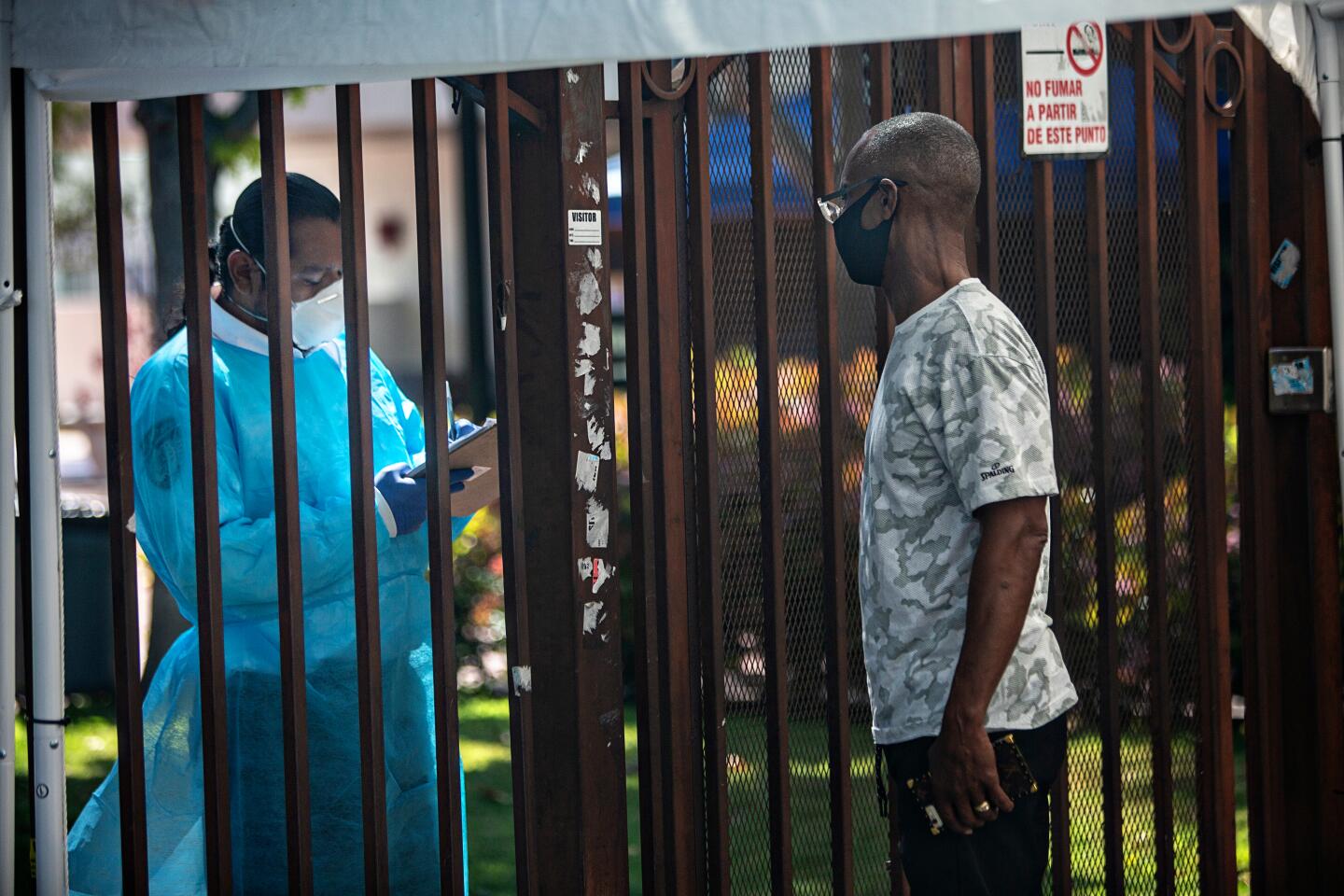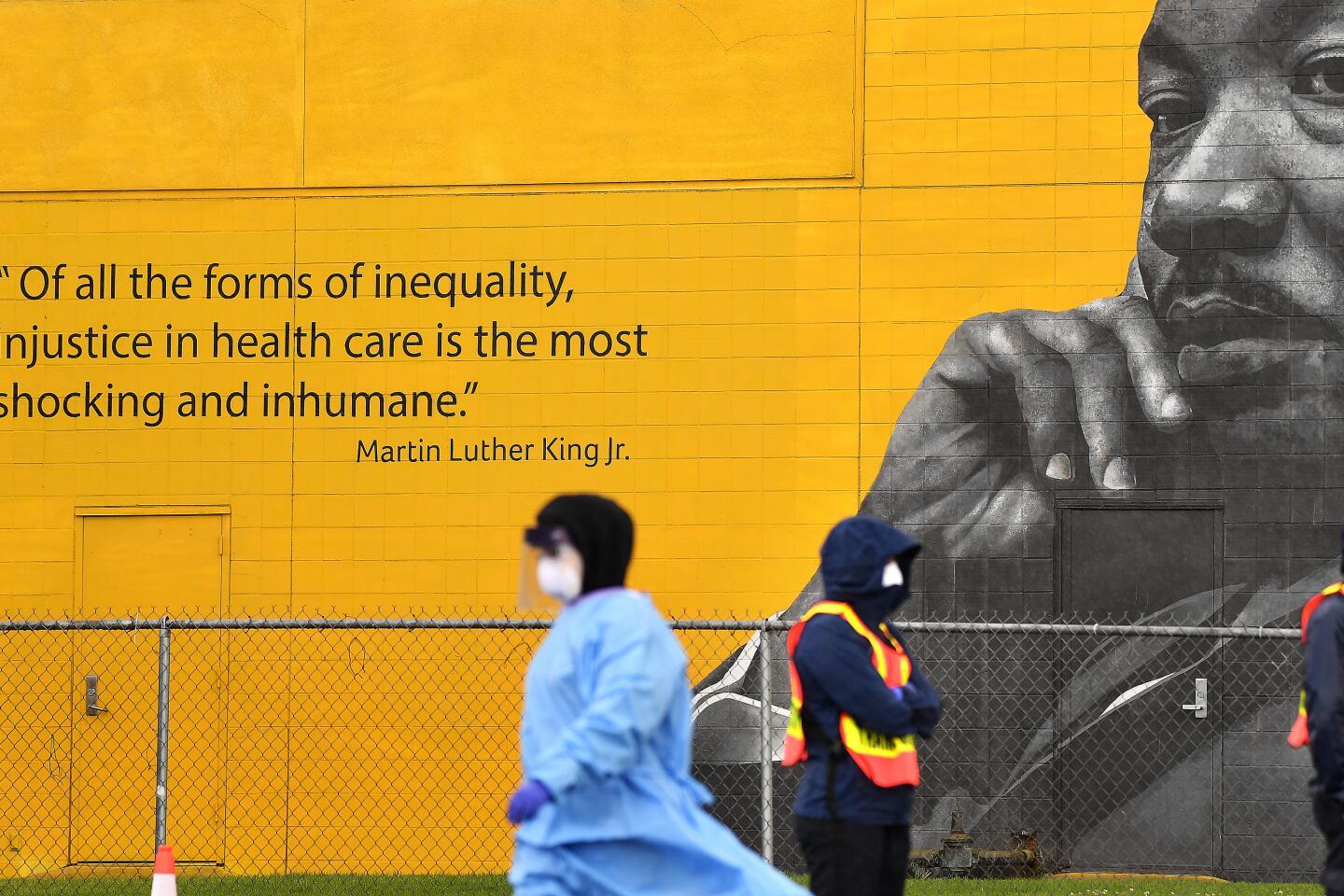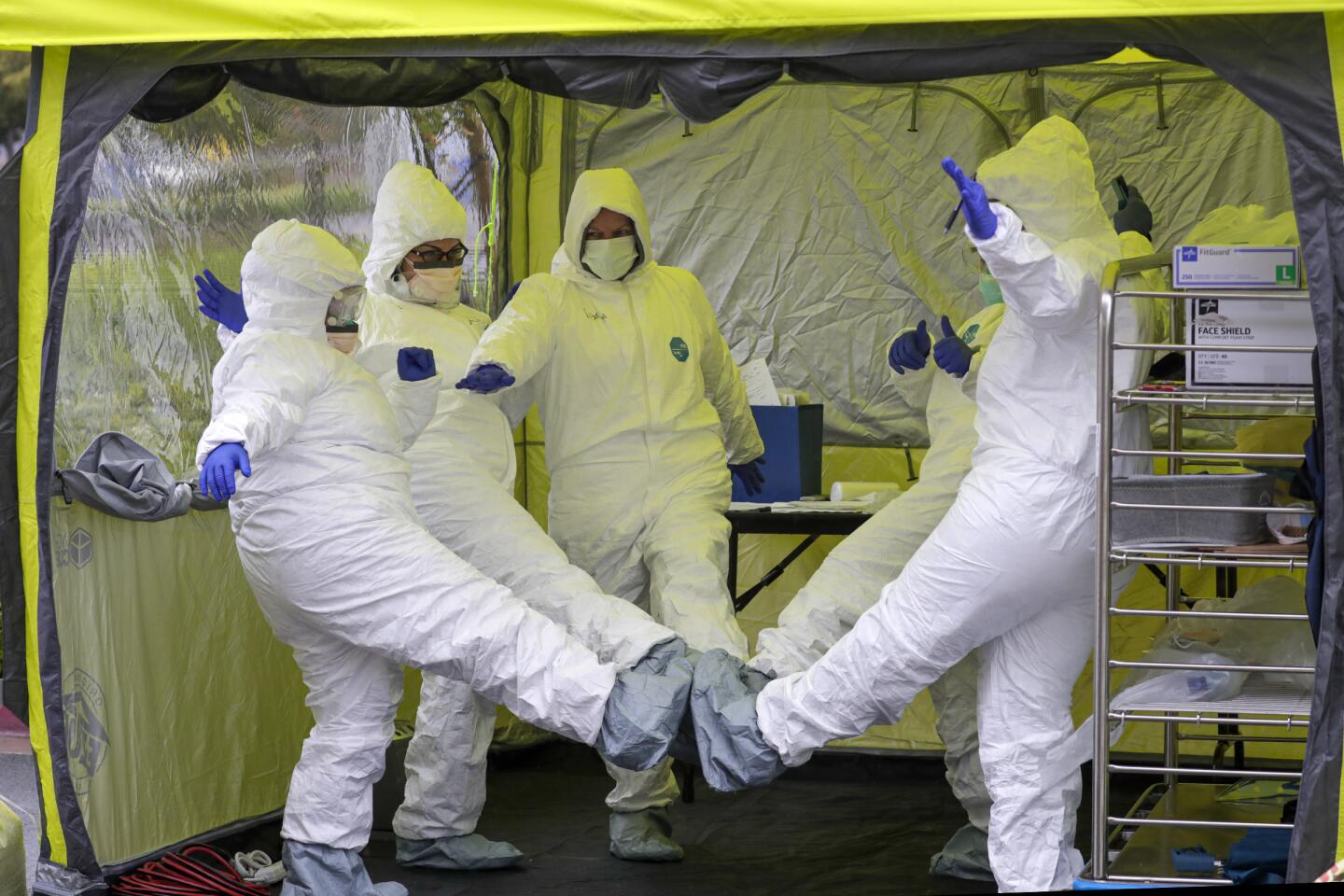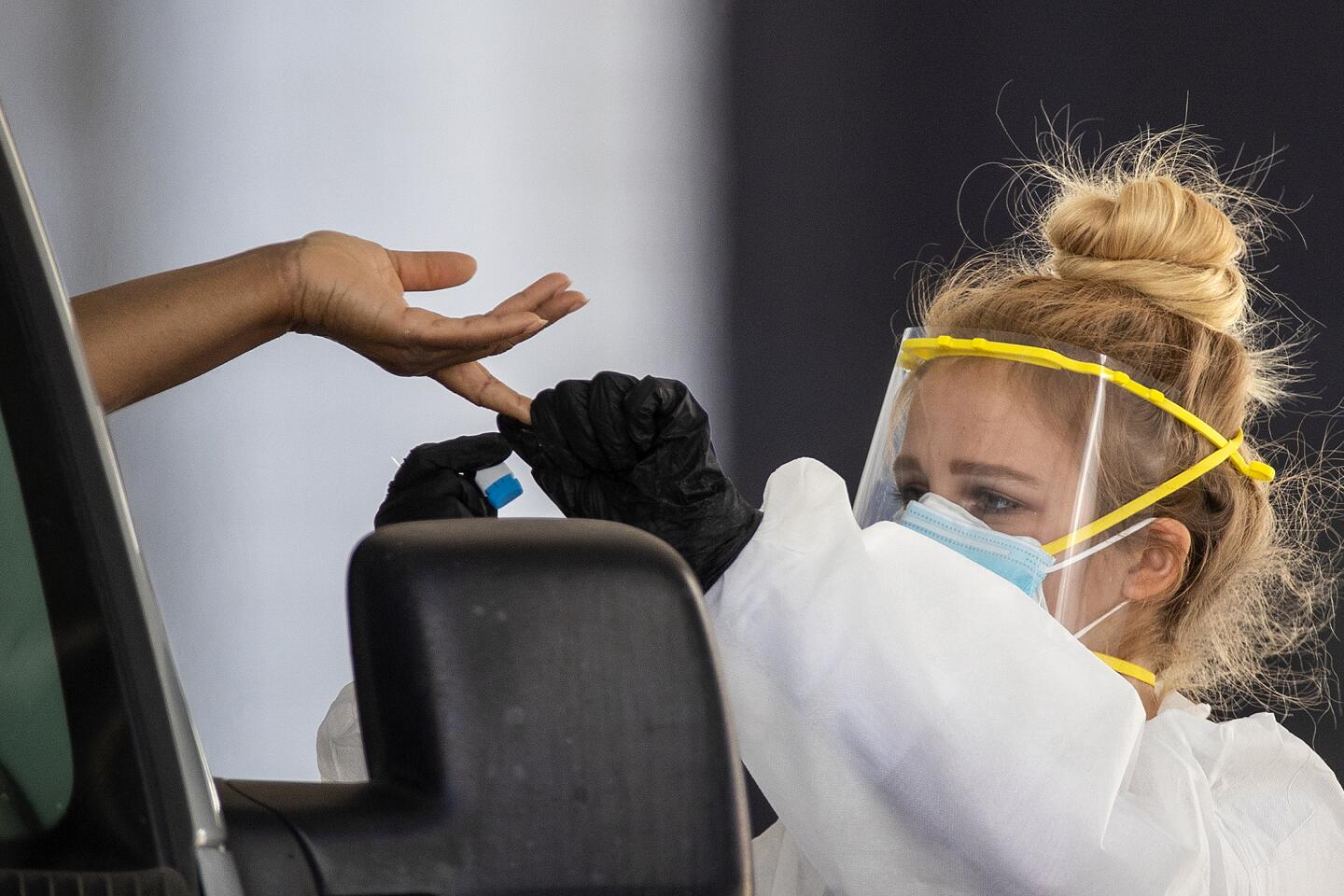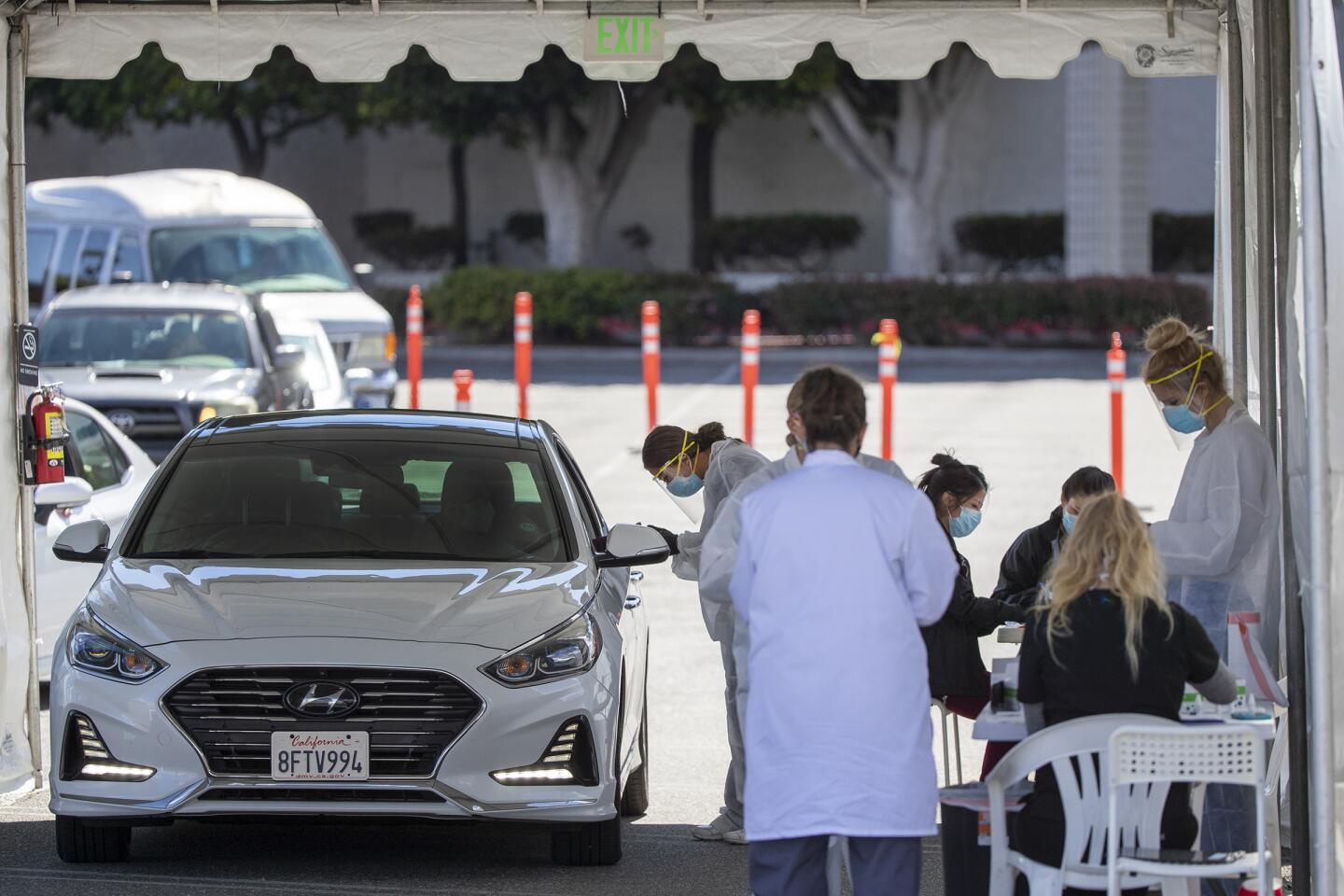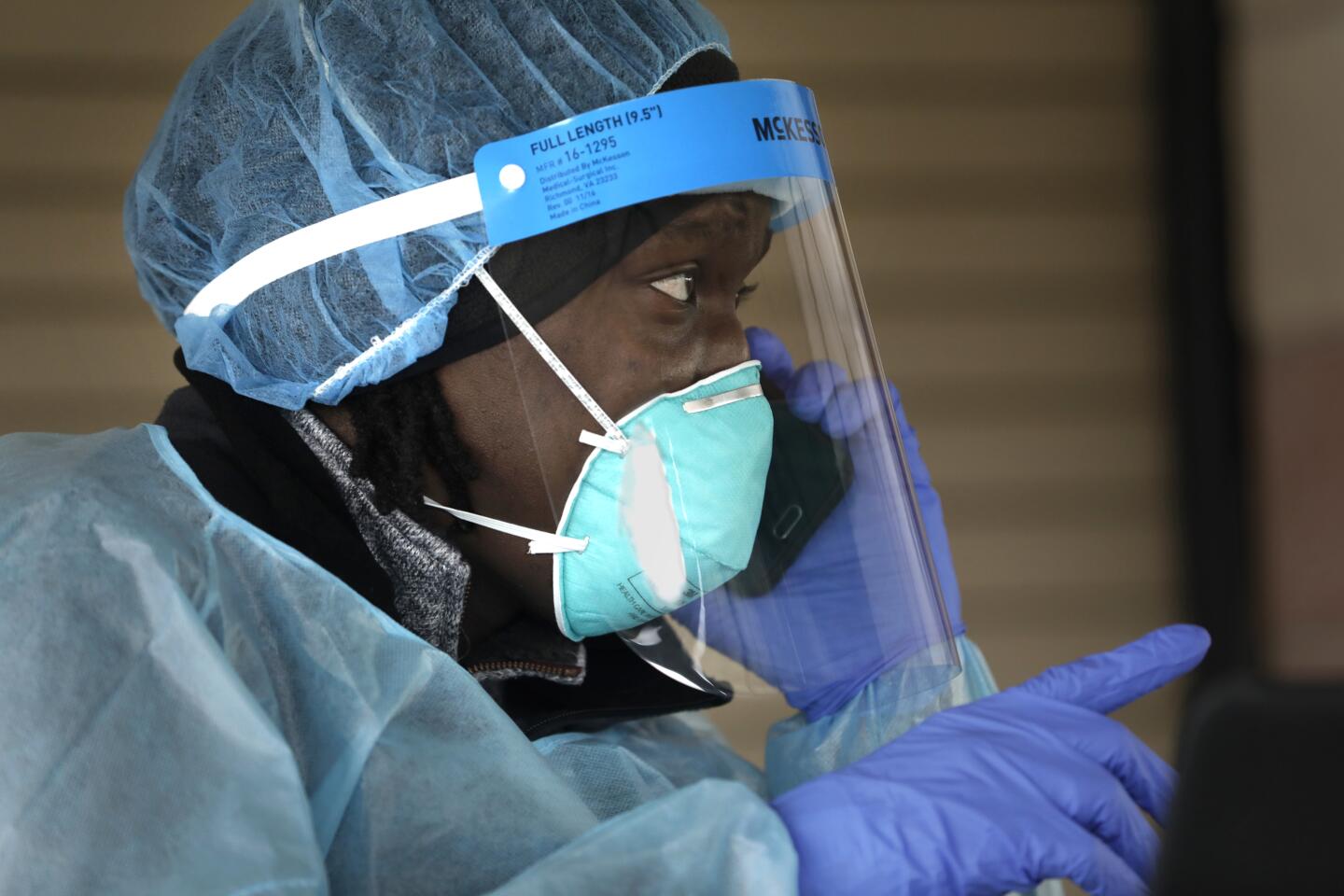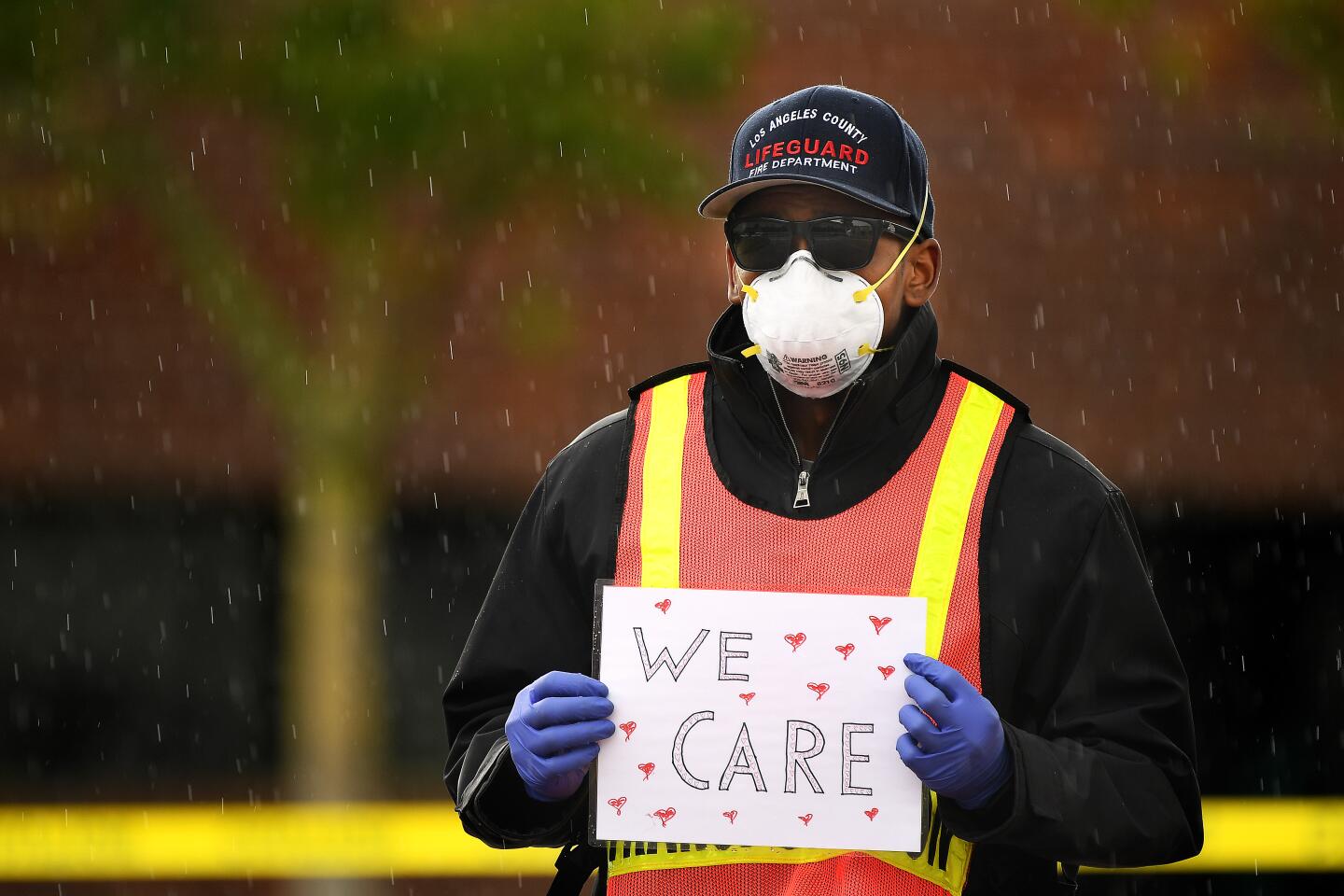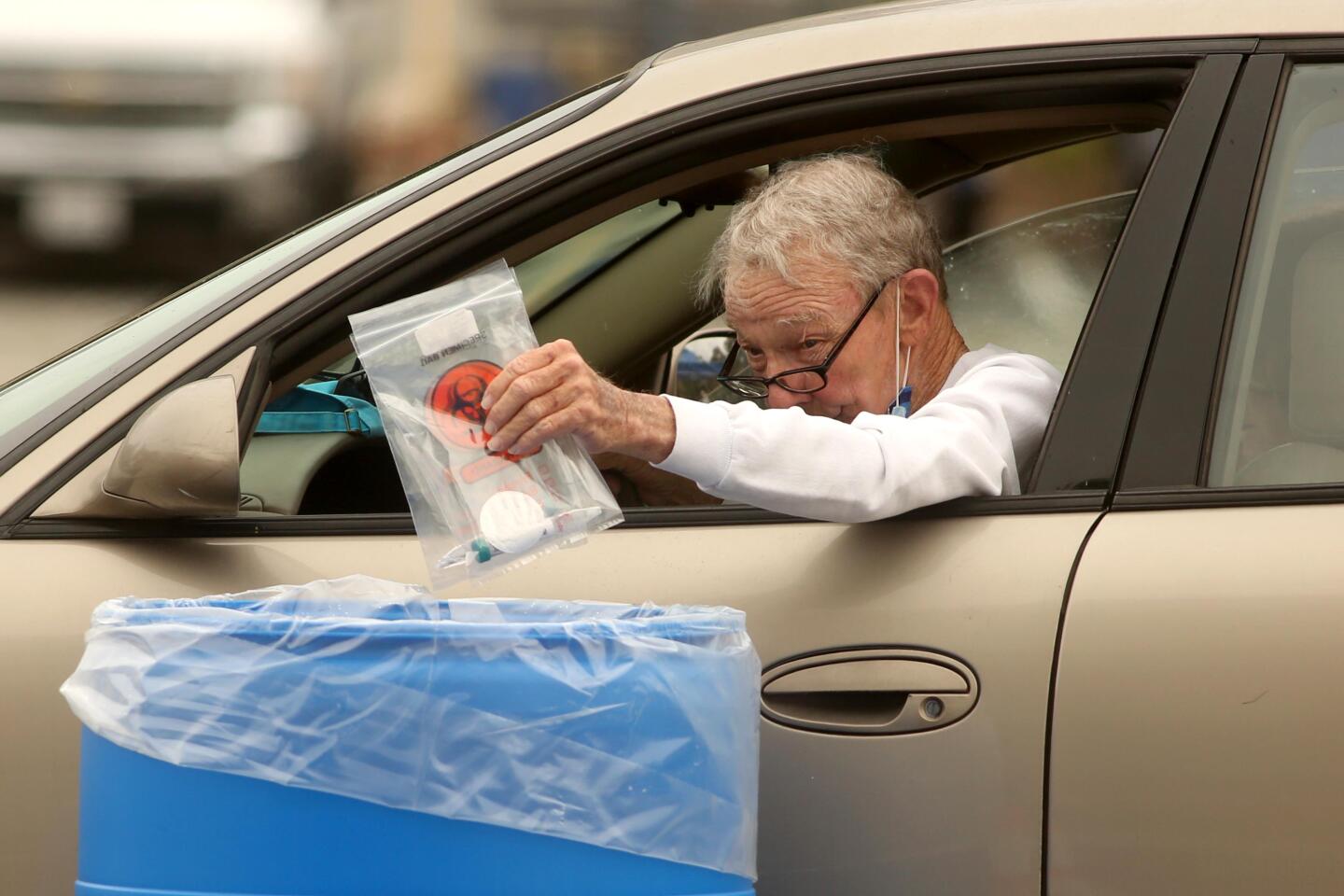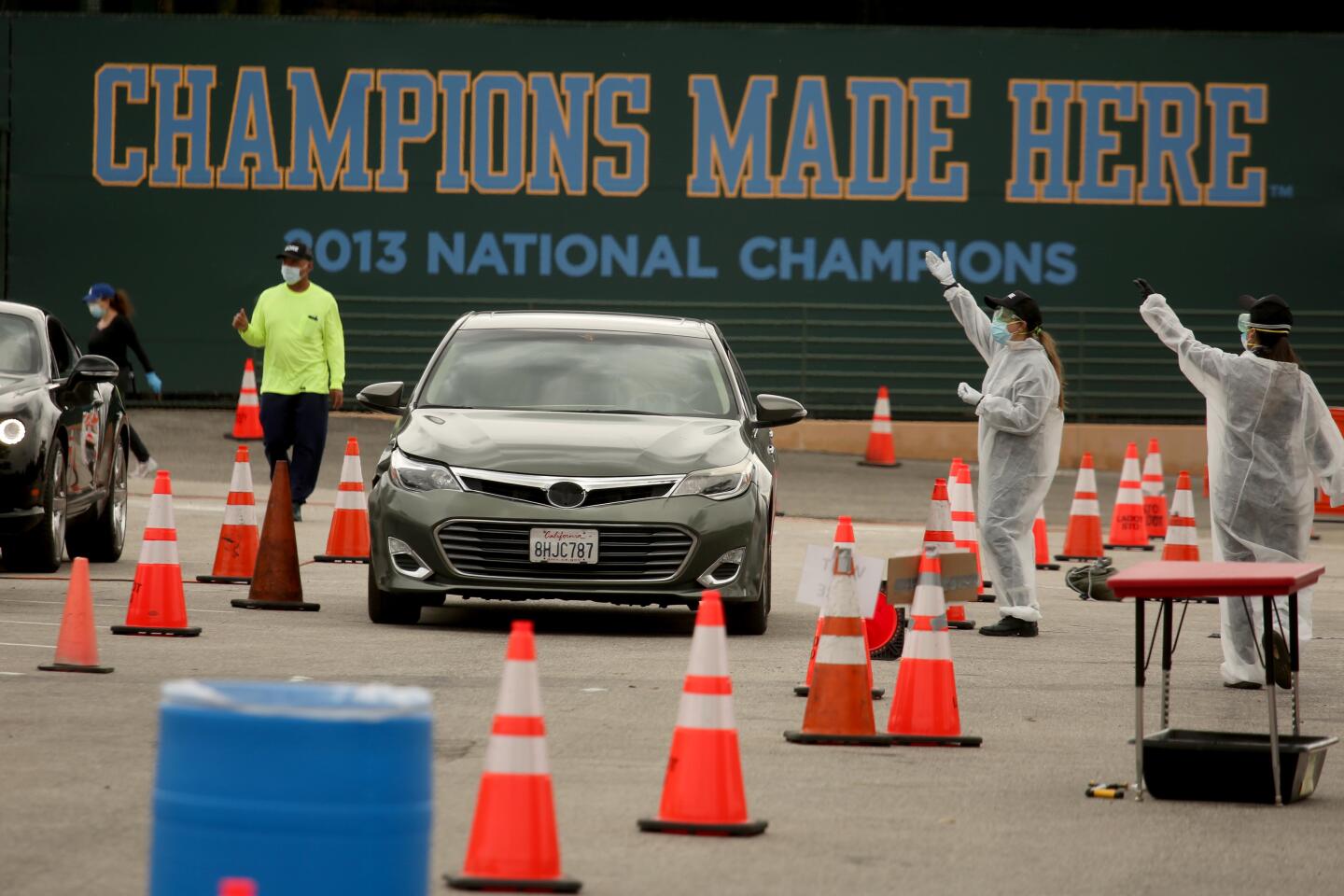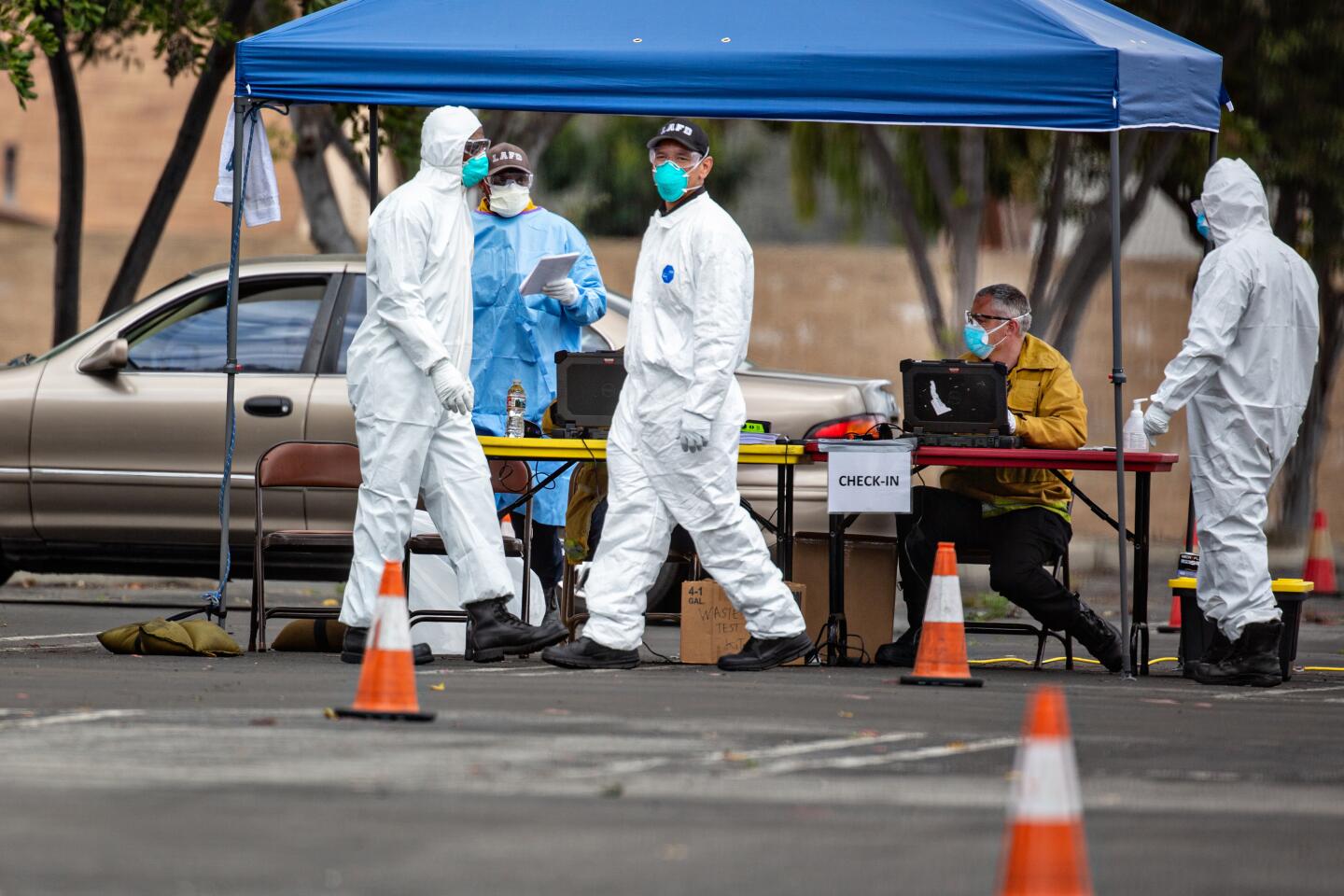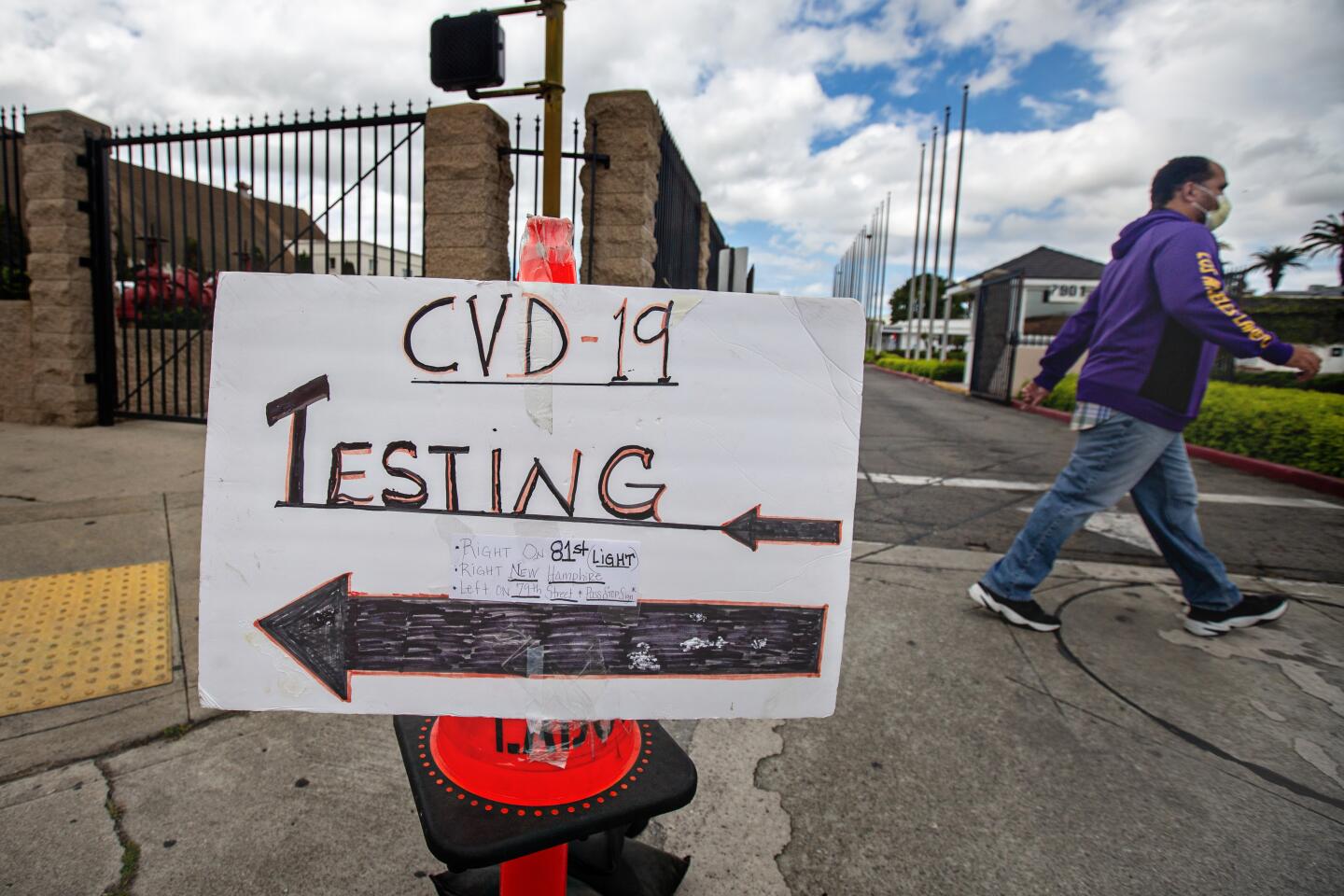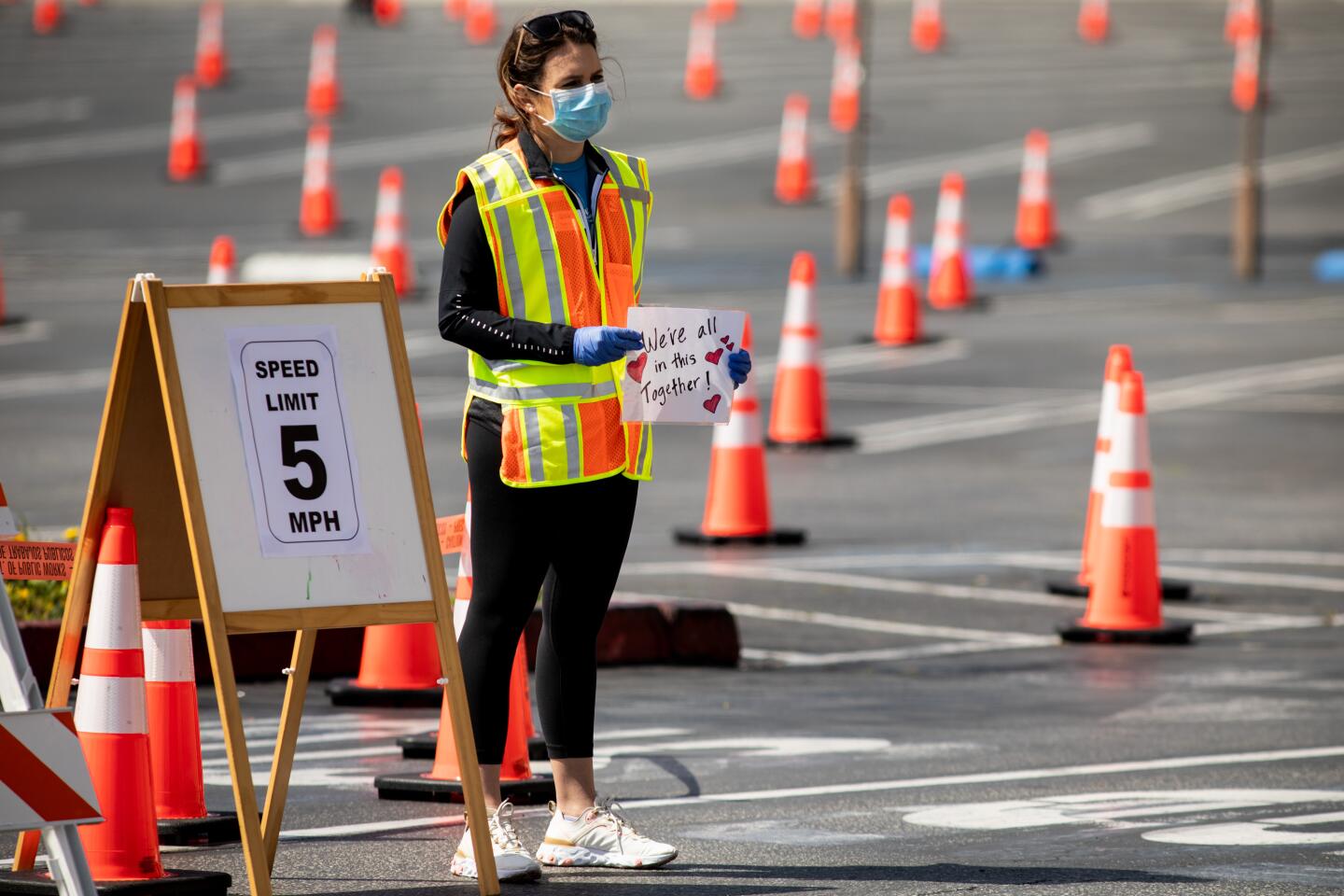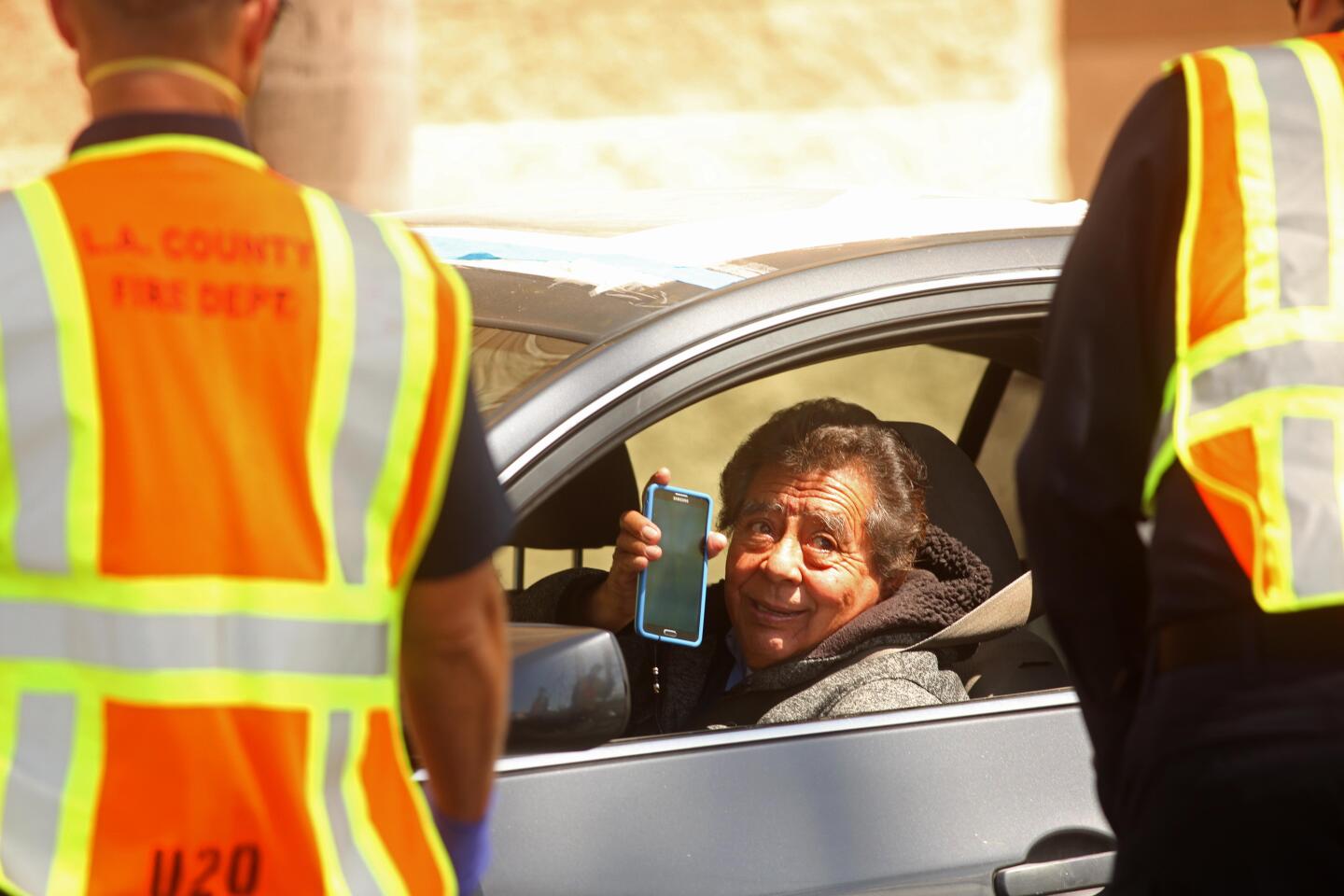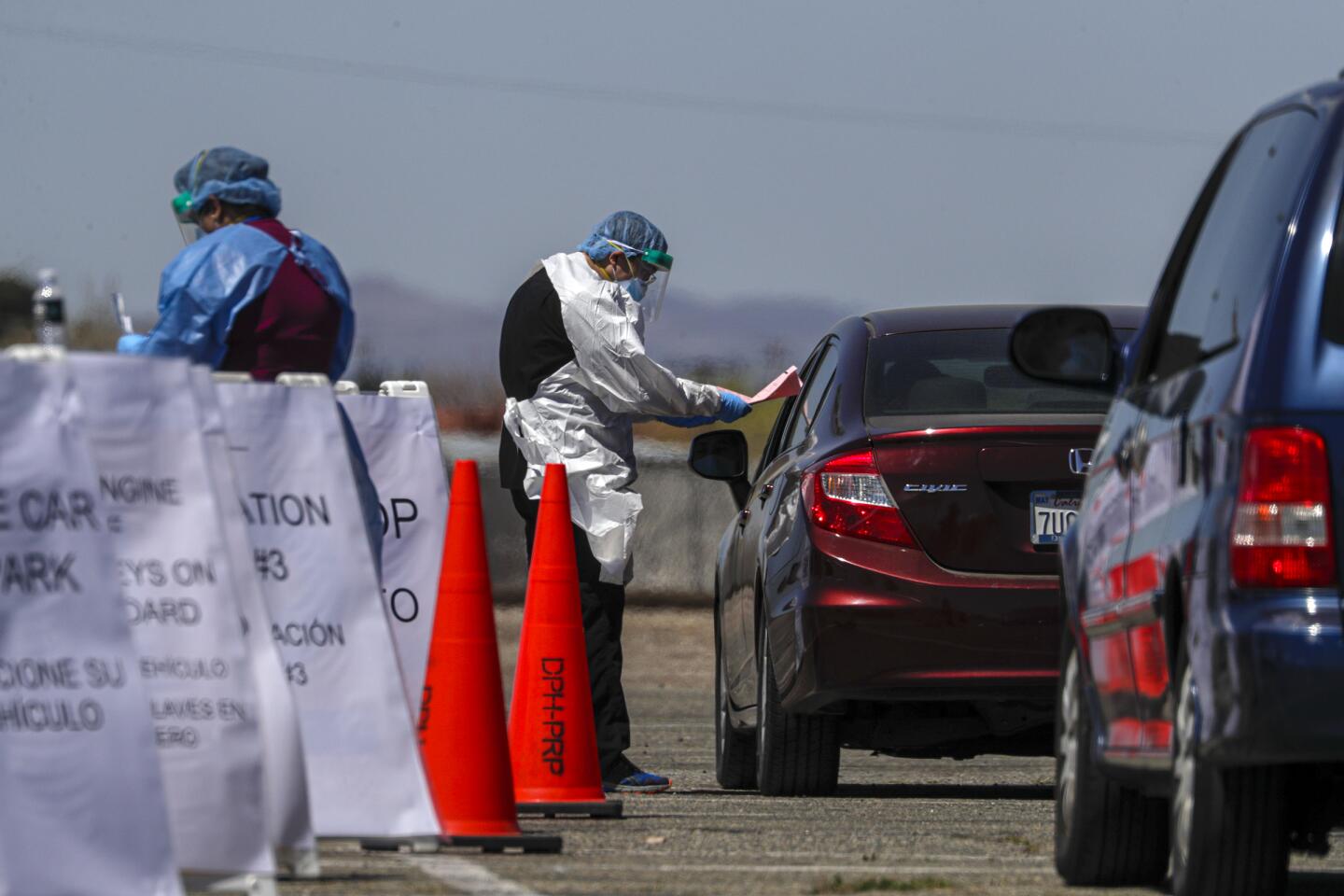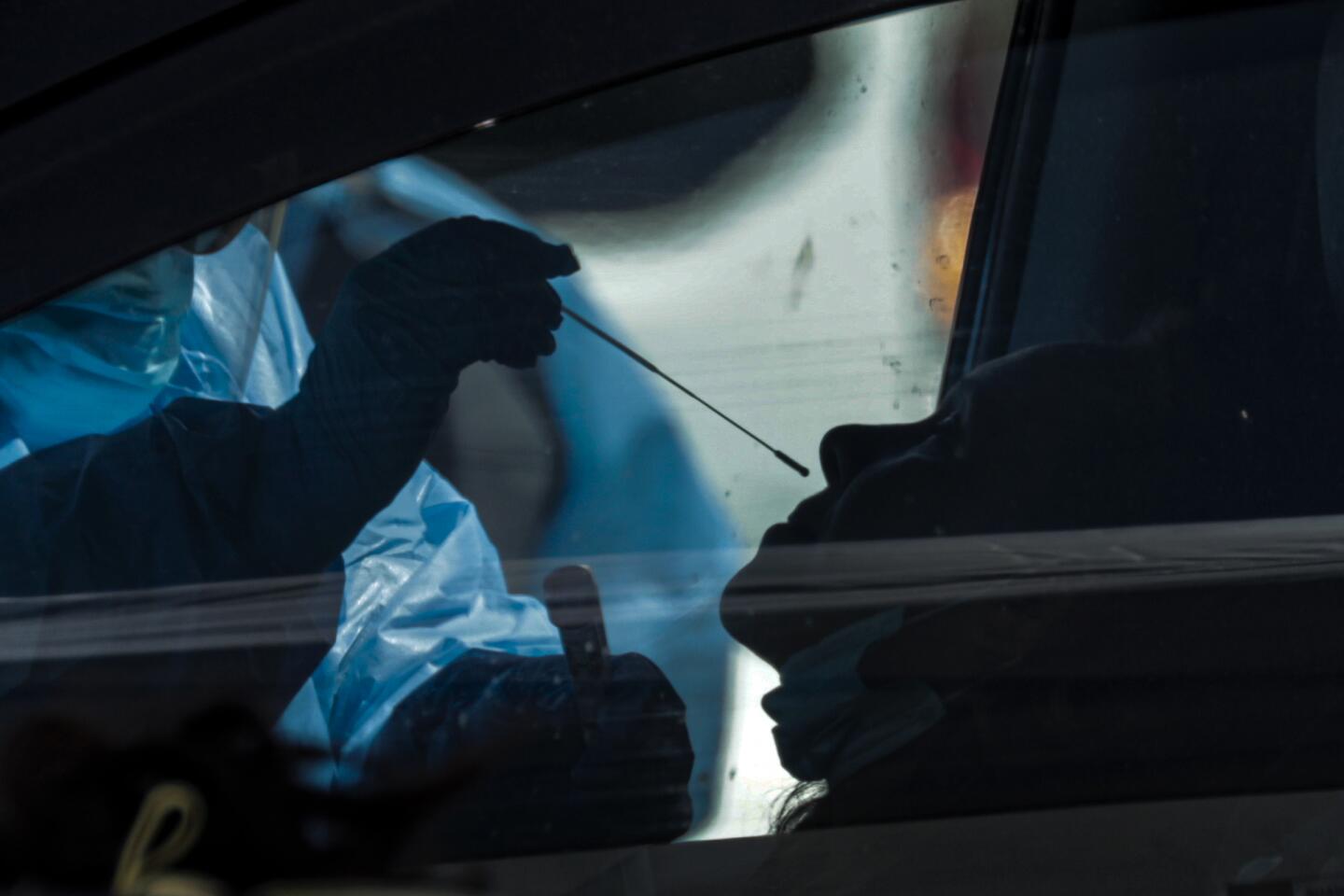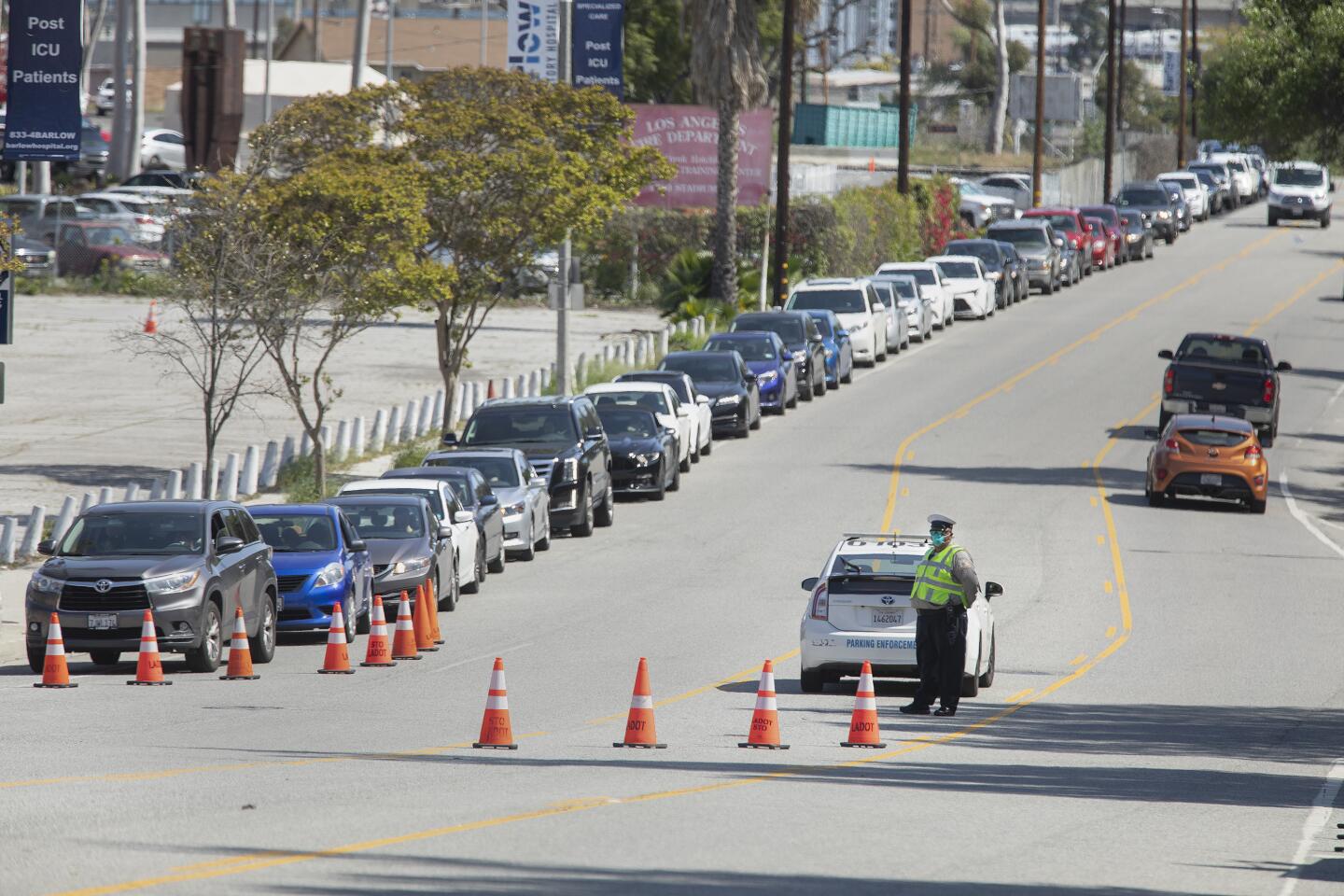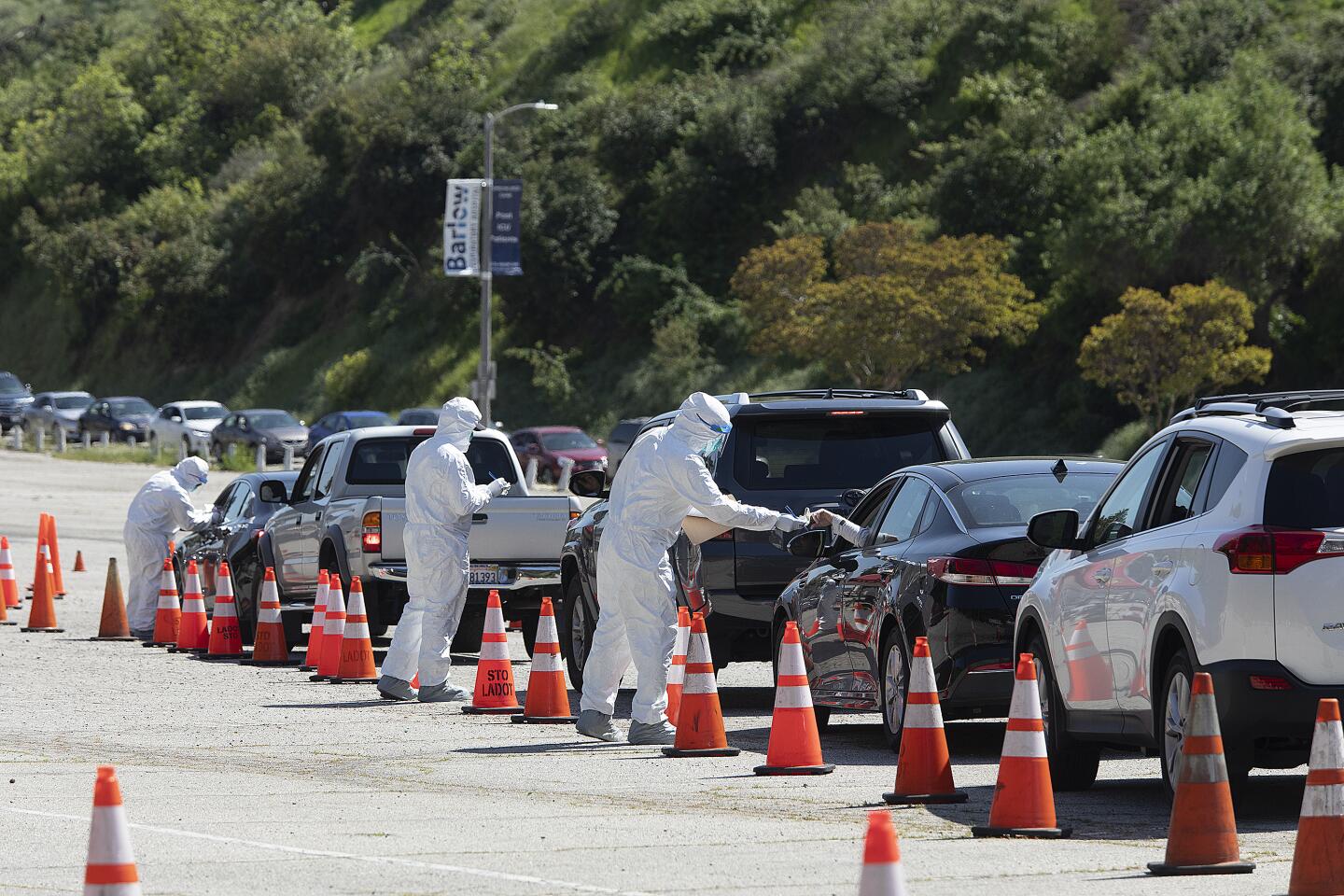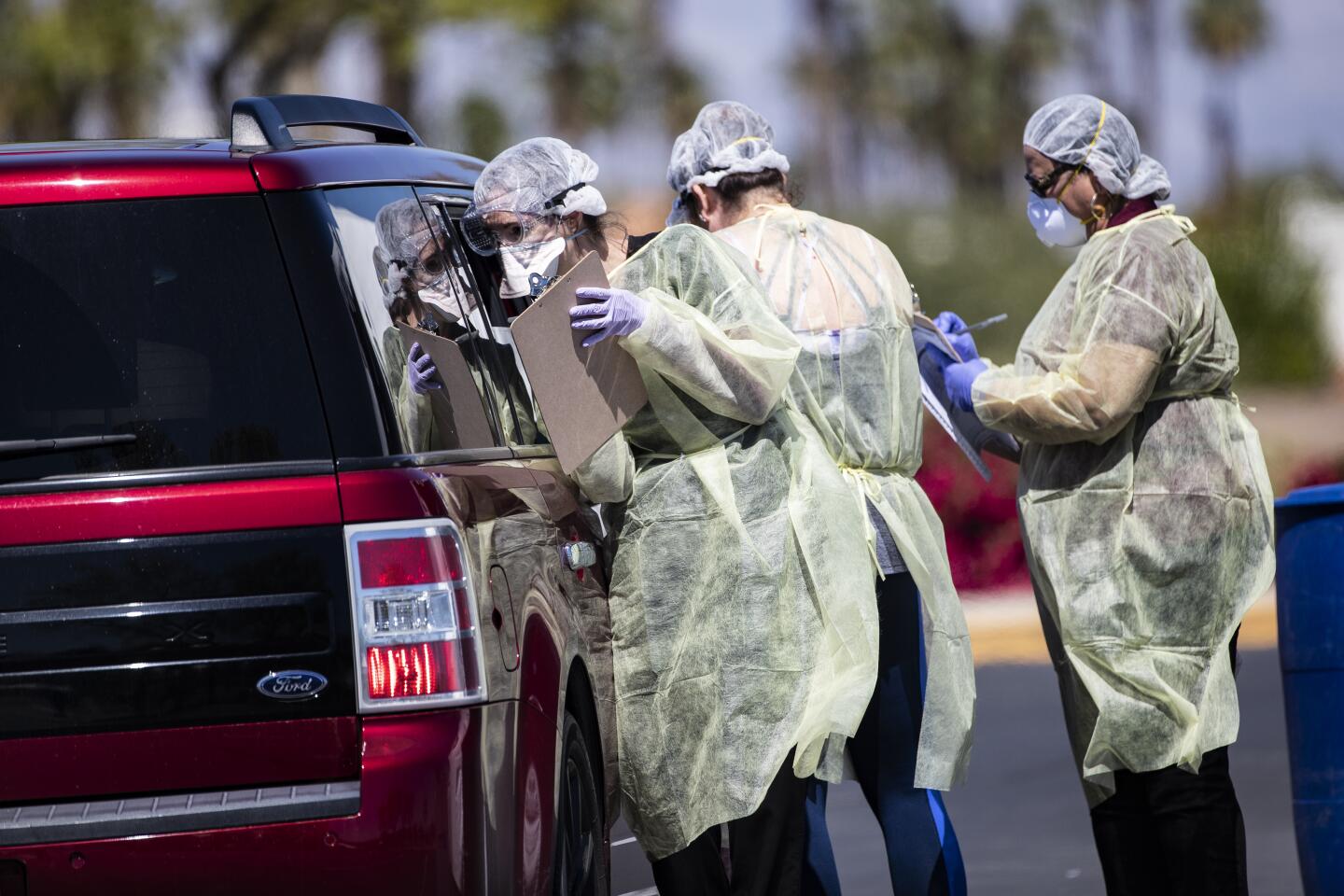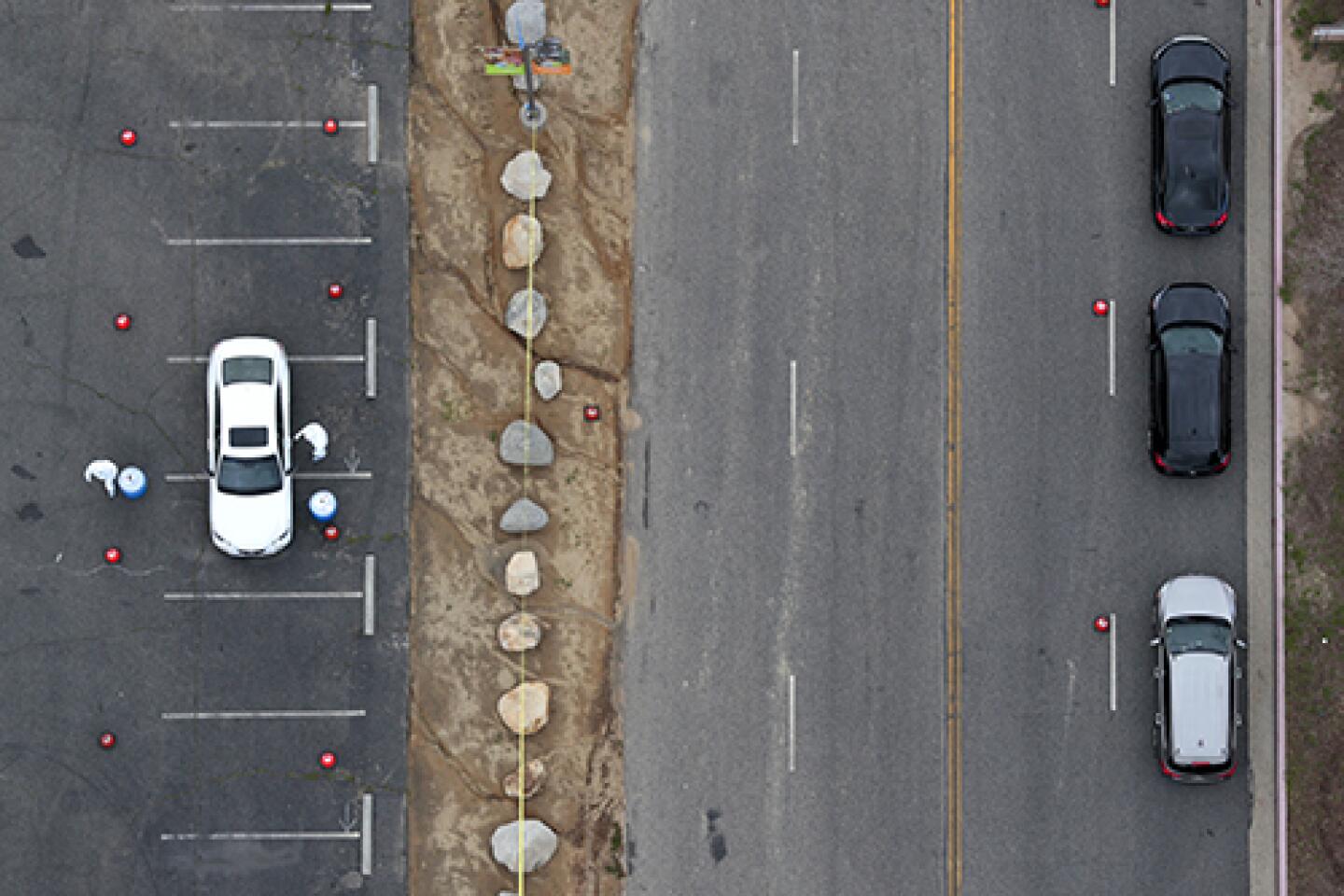Every California resident with coronavirus symptoms should be tested, state officials say
- Share via
Every California resident with symptoms of the coronavirus is now considered a top priority for testing, state public health officials announced Thursday in a move that signals growing confidence that testing capacity has increased enough to handle a significant portion of the state’s population.
Symptomatic low-risk people — including young adults without underlying health conditions — are now among the state’s top priorities for testing, along with six other specified groups, according to the new guidelines from the state Department of Public Health.
Officials also announced late Wednesday that all people in high-risk settings, including grocery store employees, bus drivers and law enforcement officers, should also be included among the highest priority to receive routine screenings for the virus.
Such workers, considered “essential” even amid the shutdown, continue to come into regular contact with the public and therefore should be given priority access to testing, even if they don’t show symptoms, according to the new state guidelines.
The latest changes appear to move the state closer to being able to effectively monitor the infection rate among residents, a goal which public health officials consider necessary before stay-at-home orders can be lifted.
County officials have the ultimate authority to set testing restrictions. But the state guidance serves as an advisory tool when a region’s testing capacity is limited.

The state’s latest announcement follows last week’s move to open up priority testing to asymptomatic people who live or work in nursing homes or prisons.
Monitoring essential workers is also viewed as a key requirement before opening up the economy.
“The first step in modifying the stay-at-home order and strengthening the economy is to put in place widespread testing, and the first group you’d want to have access to it is essential workers,” said Dr. Bob Kocher, a member of Gov. Gavin Newsom’s task force on testing.
“Conceptually, people who have lots and lots of contacts are able to be screened. And we want those people to be tested often,” he added. “You want to find out if they’re sick before they have symptoms and unknowingly spread it to other people.”
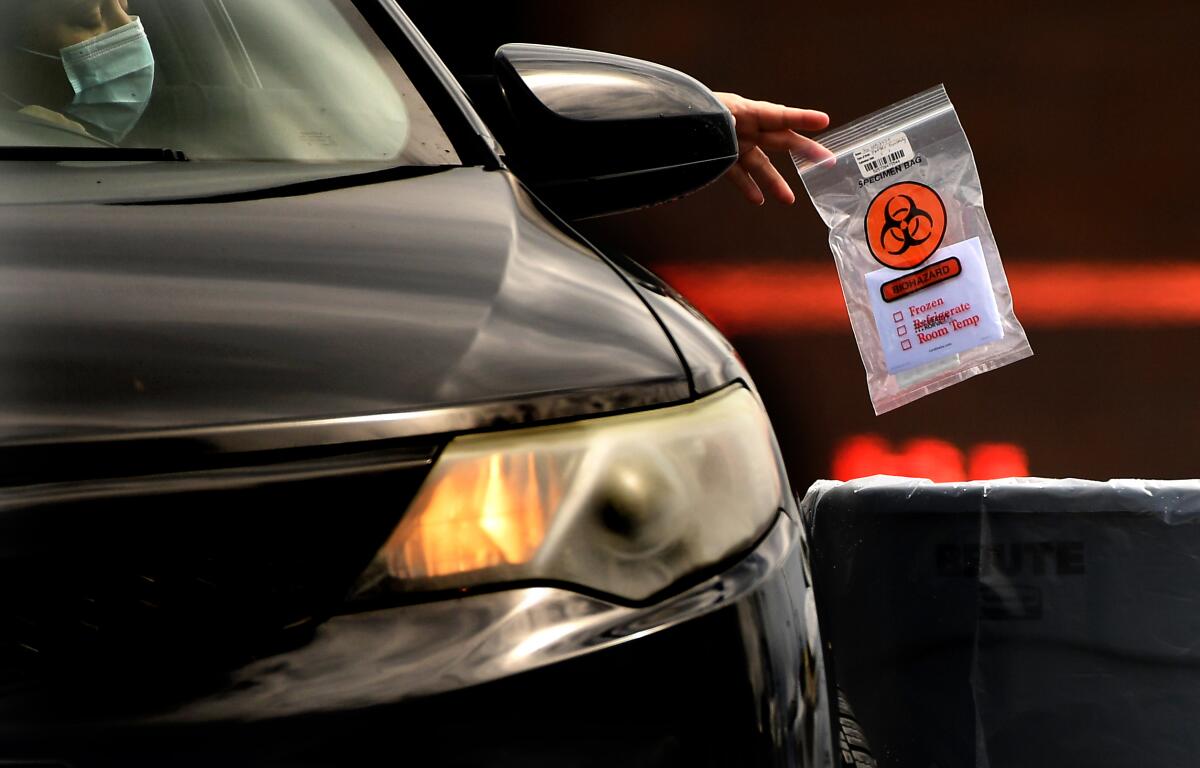
The state’s new recommendations reflect an overall increase in testing capacity. Major labs have reported sufficient supplies to run more procedures, the public health department said, and the state has averaged more than 20,000 tests per day for the last several days. But asked how many essential workers are active in the state and would presumably need testing, the health department said it “does not have that information.”
Adherence to the state’s recommendations varies by county. In some areas, such as L.A. County, health clinics and labs appear well-equipped to handle more test subjects. All county residents can get a free swab test at city-run sites, L.A. Mayor Eric Garcetti said Wednesday.
But in other areas, like Bakersfield or Fresno, testing sites can require a long commute. Newsom’s team released a state diagram showing testing deserts in parts of the Central Valley and along the Nevada and Oregon state lines, as well as in dense urban regions with large numbers of minorities.
To address the discrepancies, the governor announced six new testing sites prioritizing “black and brown communities and focusing on rural communities.” About 80 others are expected to follow by early May.
In a message to health agencies and medical workers, the state health department acknowledged that health officers in some rural regions and high-density neighborhoods may not yet have the infrastructure and supplies to lift local restrictions. Officials said the department’s prioritization guidelines should be used “when testing availability is limited” and that the policy “should not supersede the recommendations of a clinician or local health officer.”
Eventually, officials said, widespread testing will help public health officials closely track potential cases, one of the requirements for California to ease into the next phase of the pandemic response. Such tracking will require an army of at least 10,000 contact tracers, Newsom said.
But the governor has repeatedly emphasized that there is a long, methodical road ahead before social restrictions are eased, saying that the spread of the virus will ultimately decide what happens next.
“Politics will not drive our decision-making. Protests won’t drive our decision-making. Political pressure will not drive our decision-making,” he said in a Tuesday briefing. “Dates don’t. But data does.”
Sign up for Essential California
The most important California stories and recommendations in your inbox every morning.
You may occasionally receive promotional content from the Los Angeles Times.
